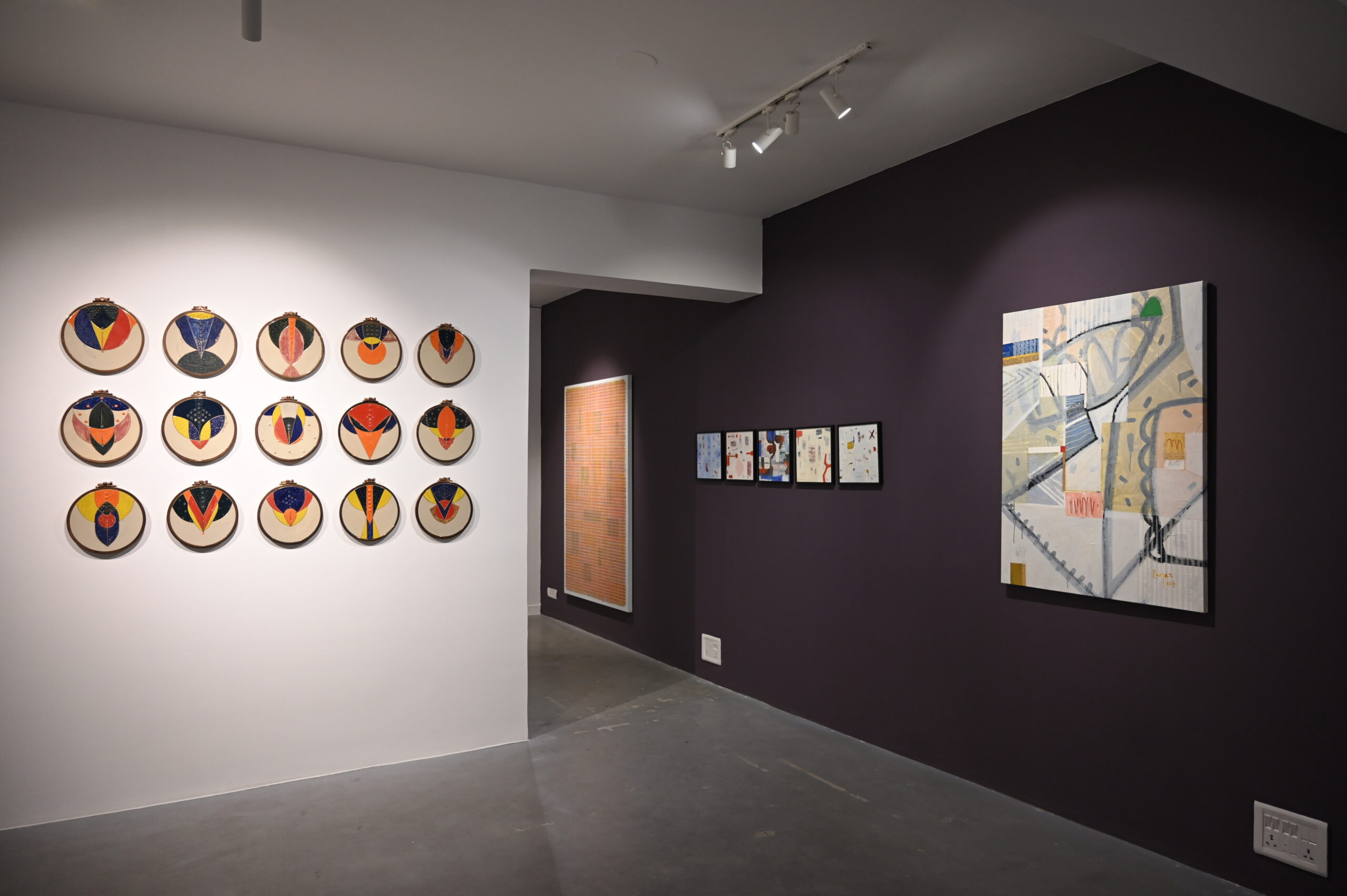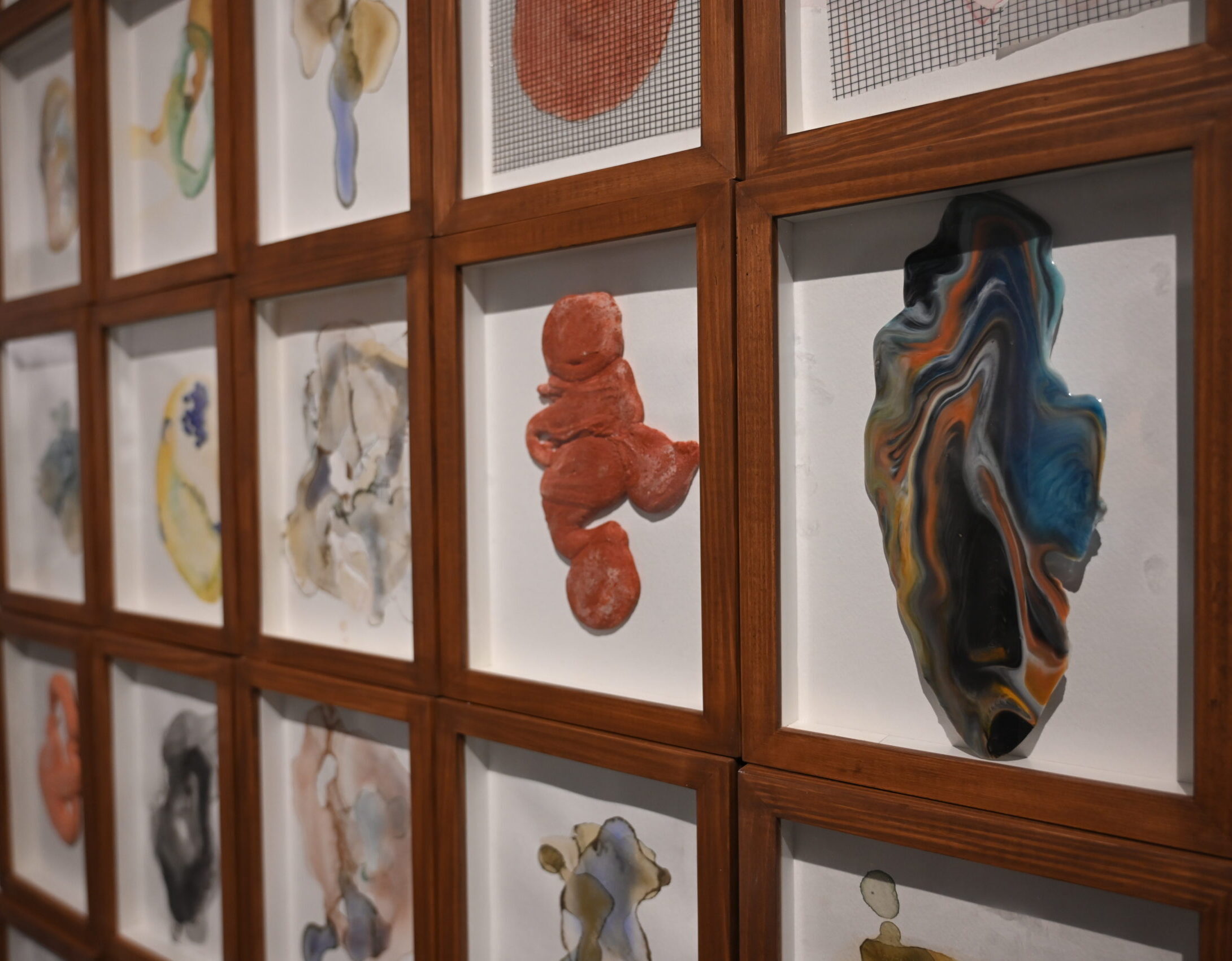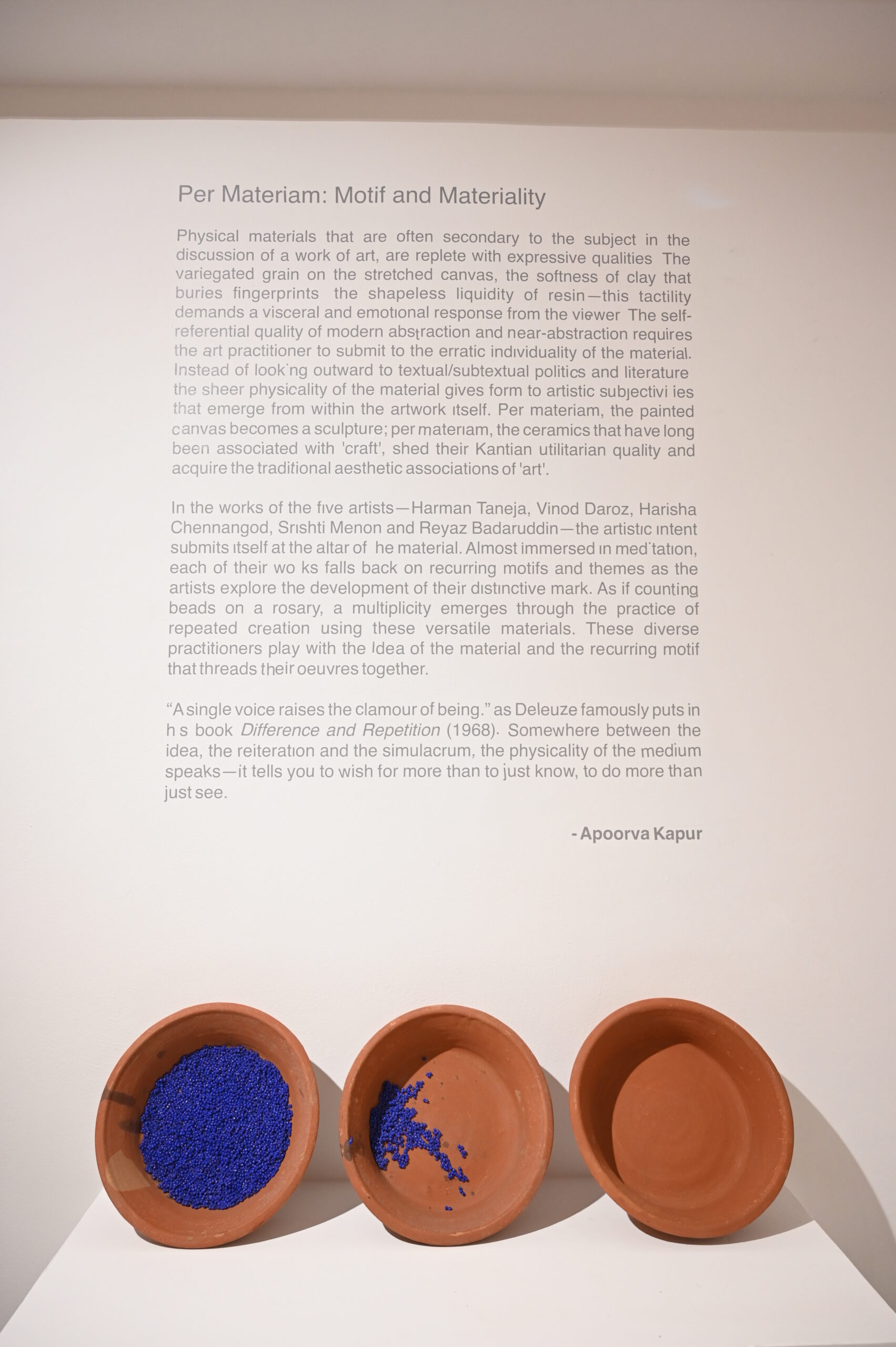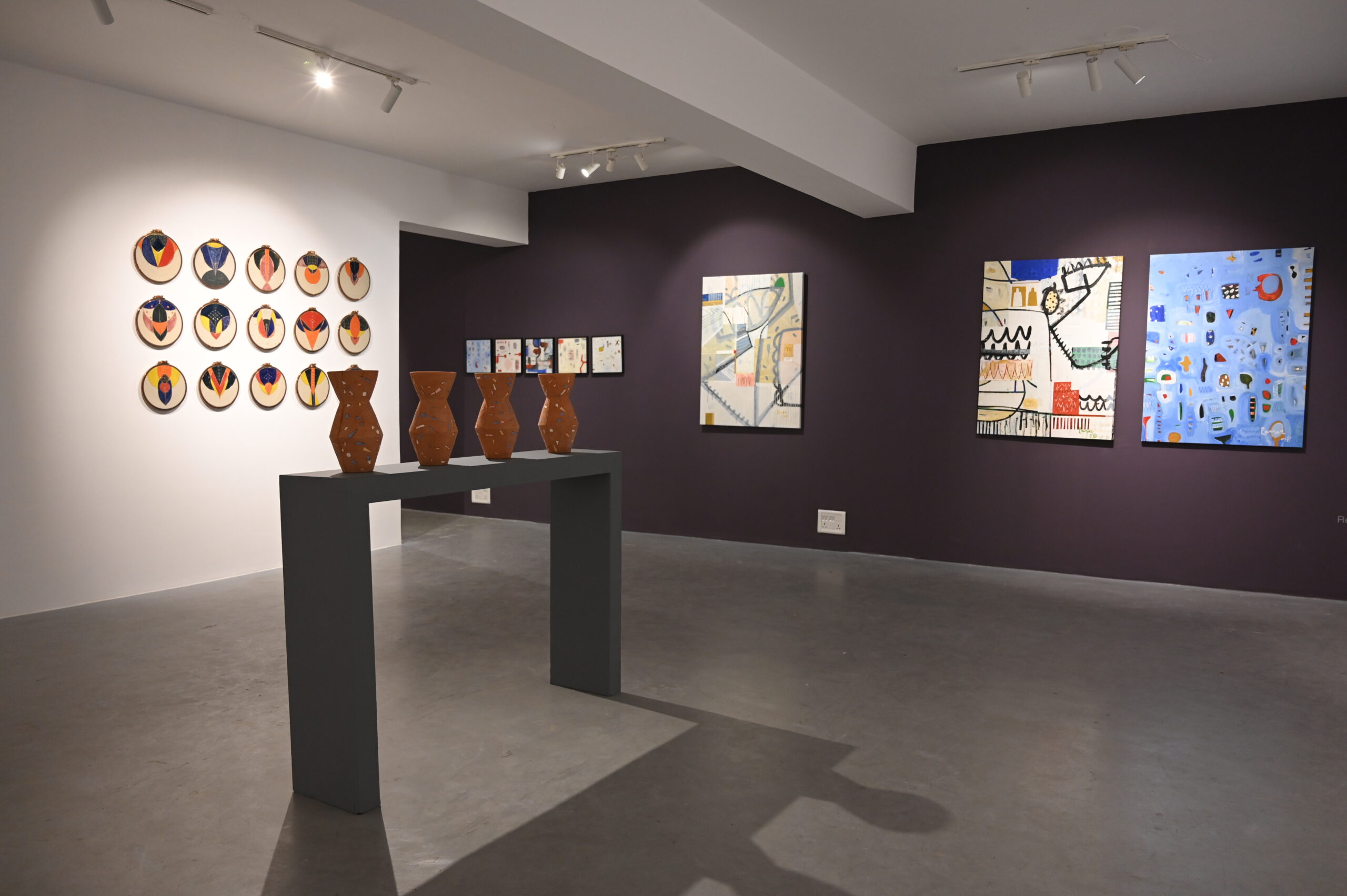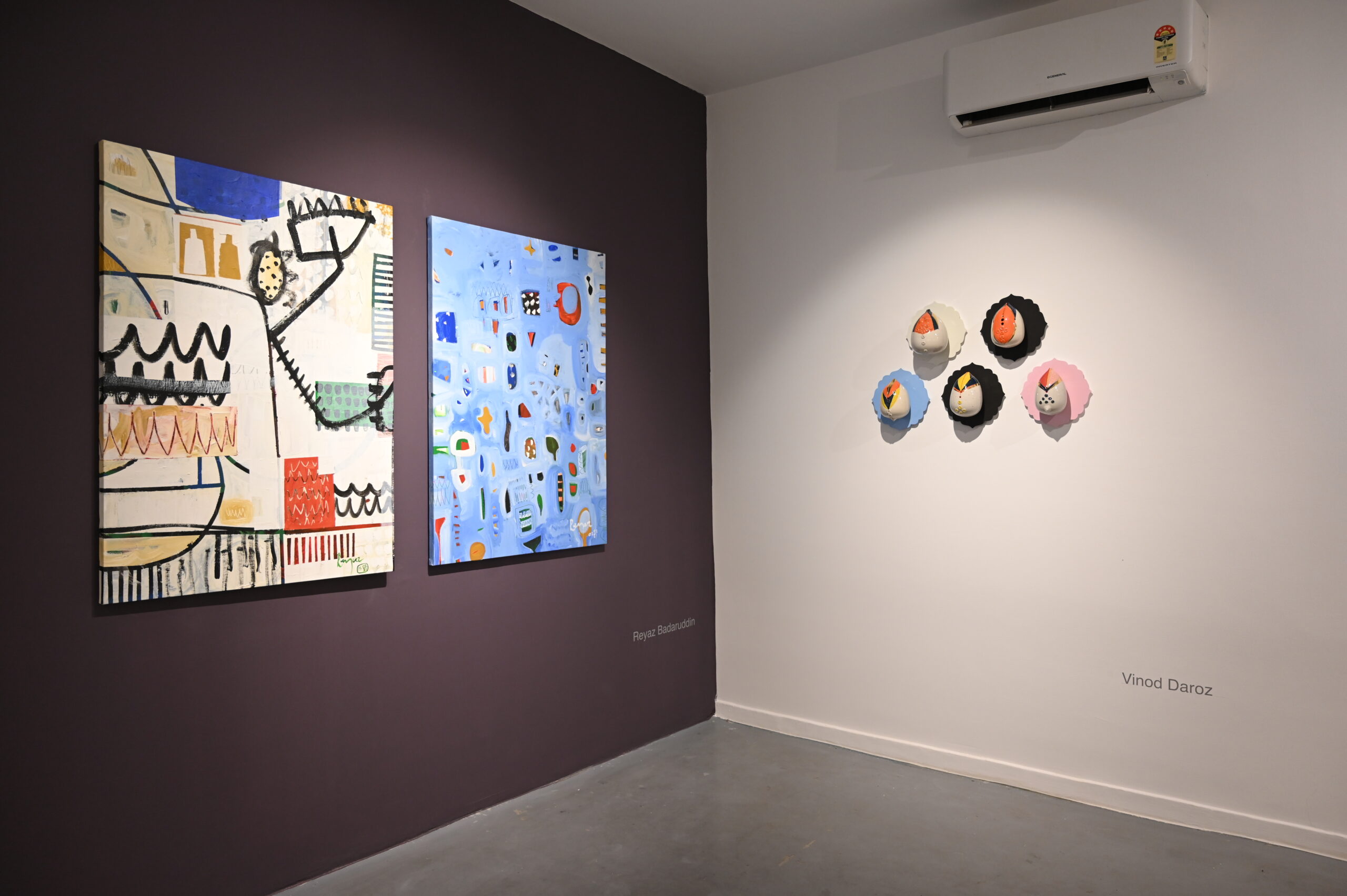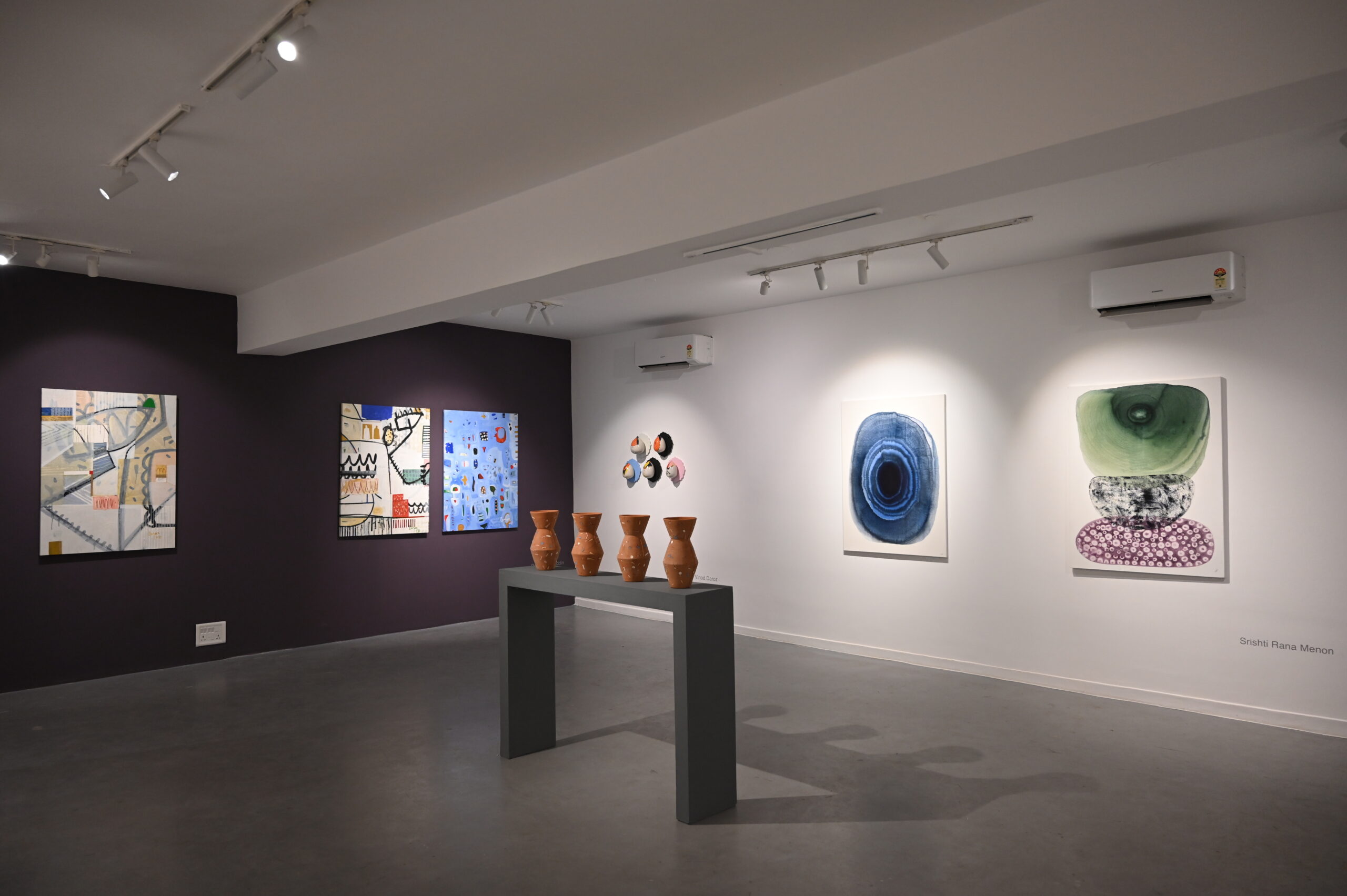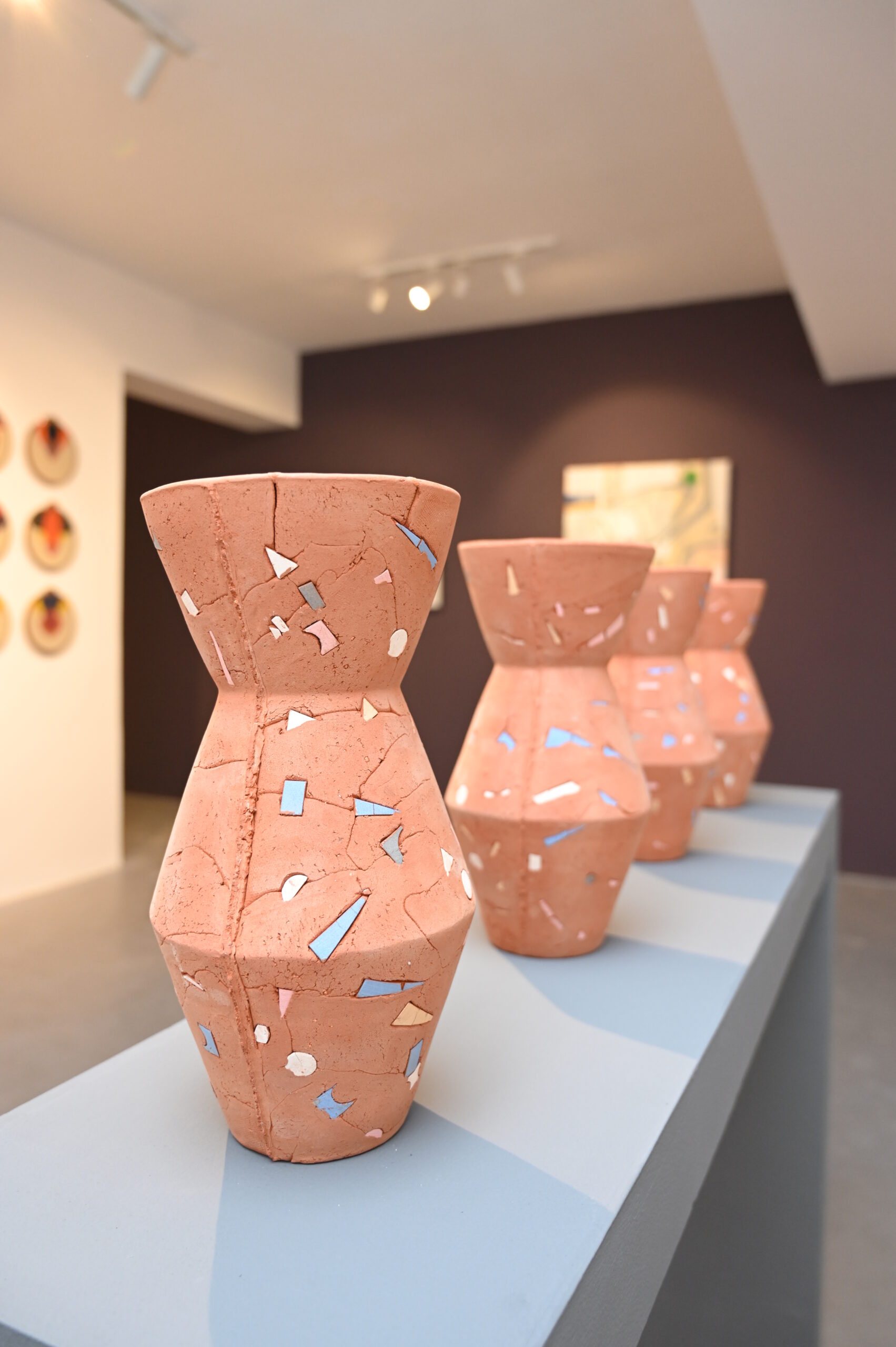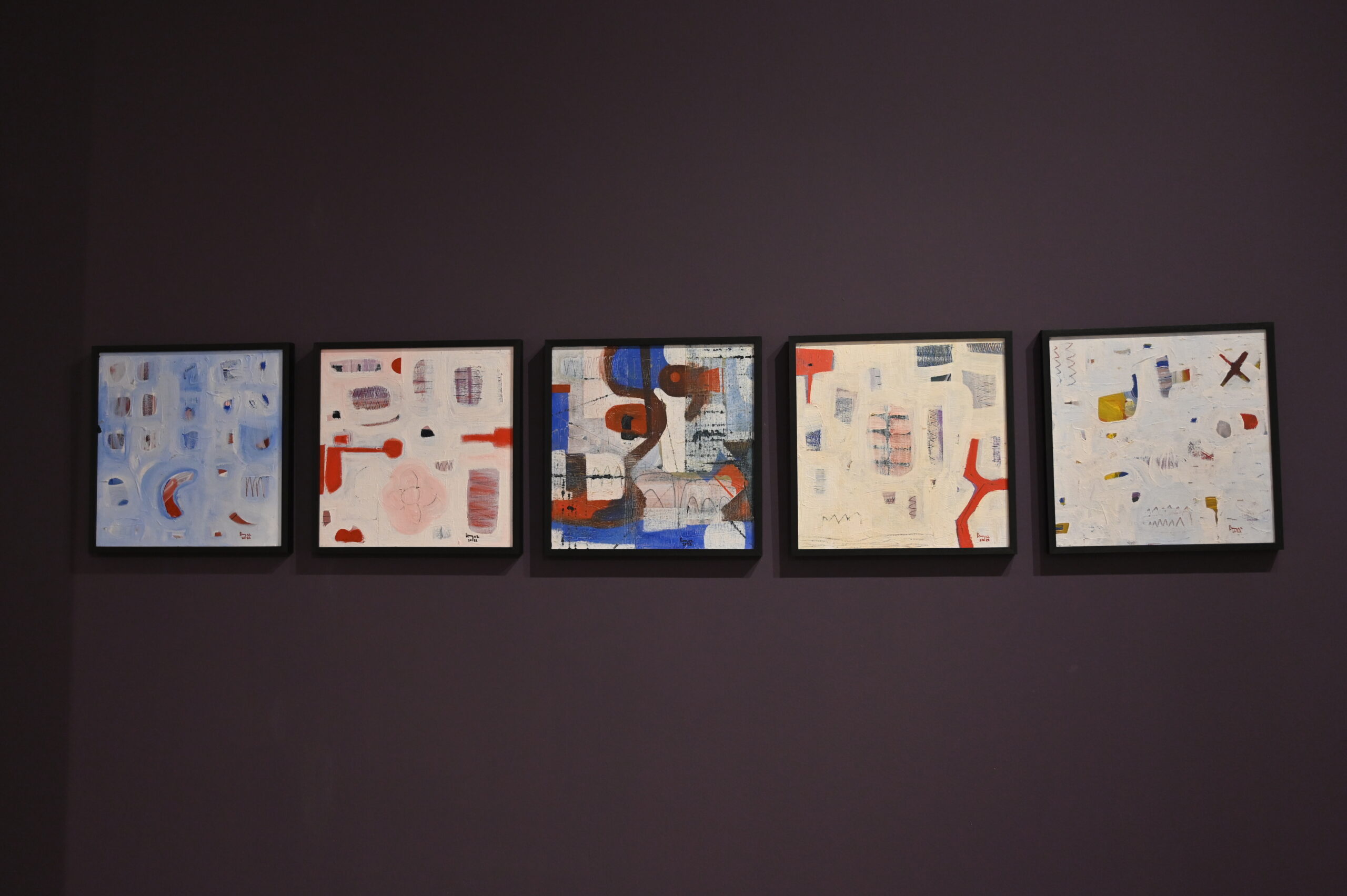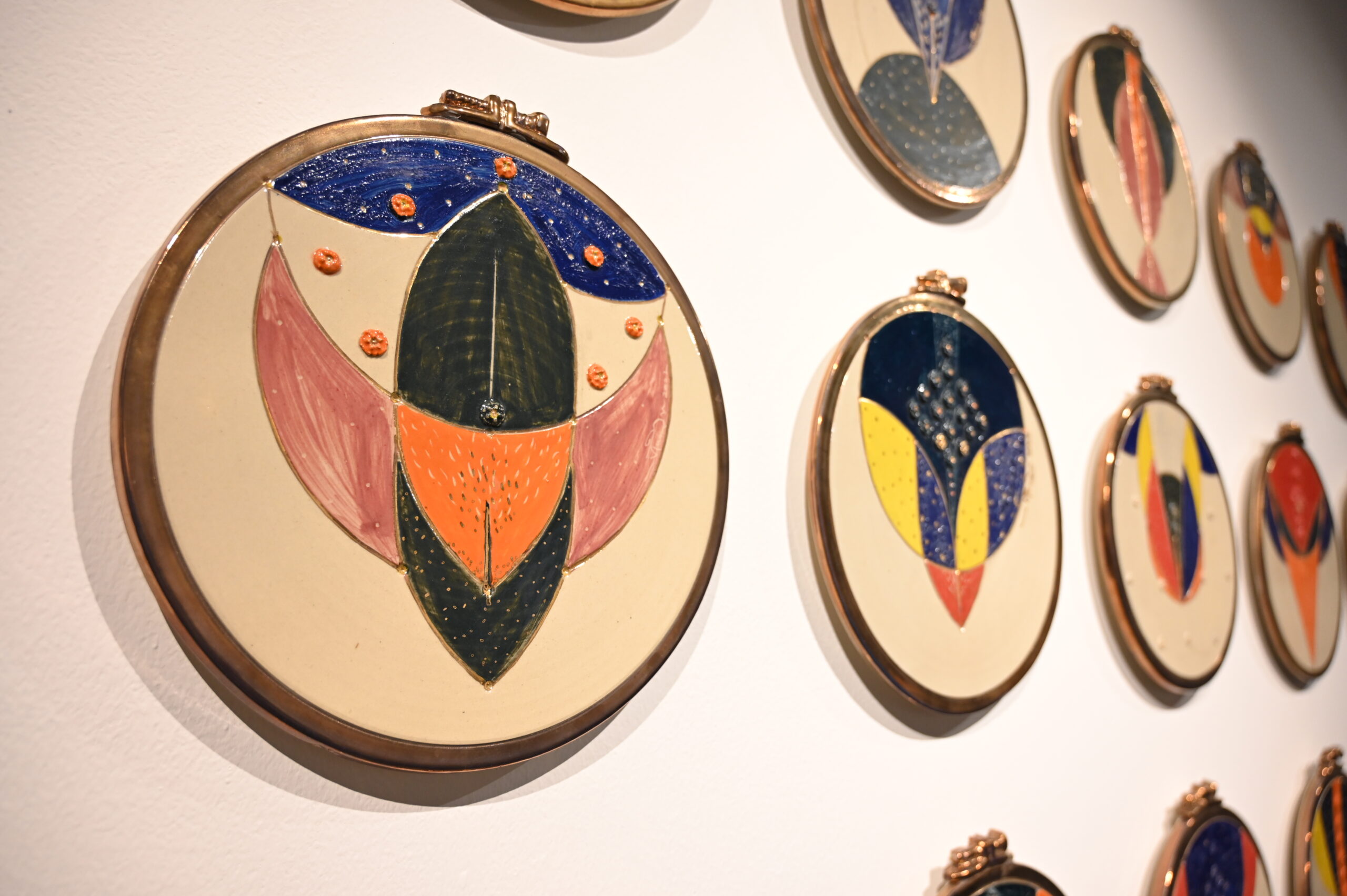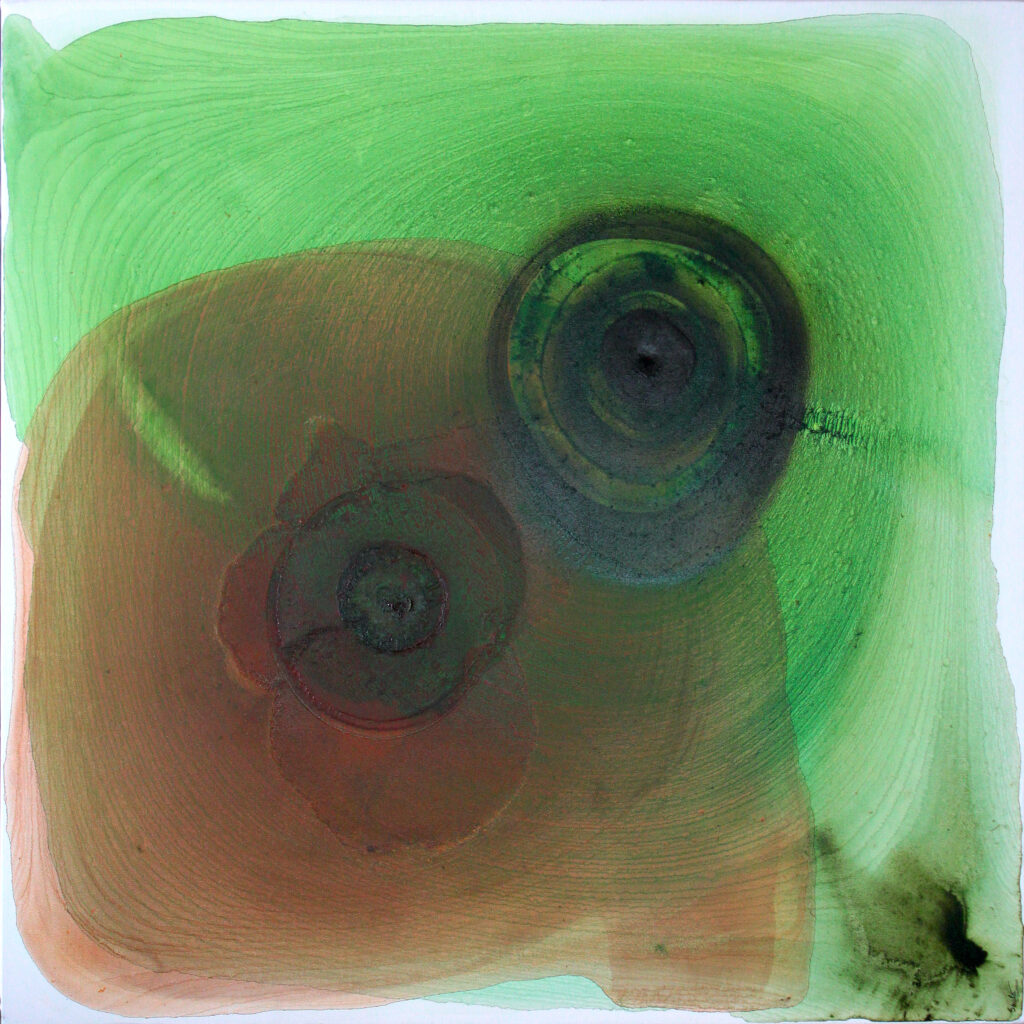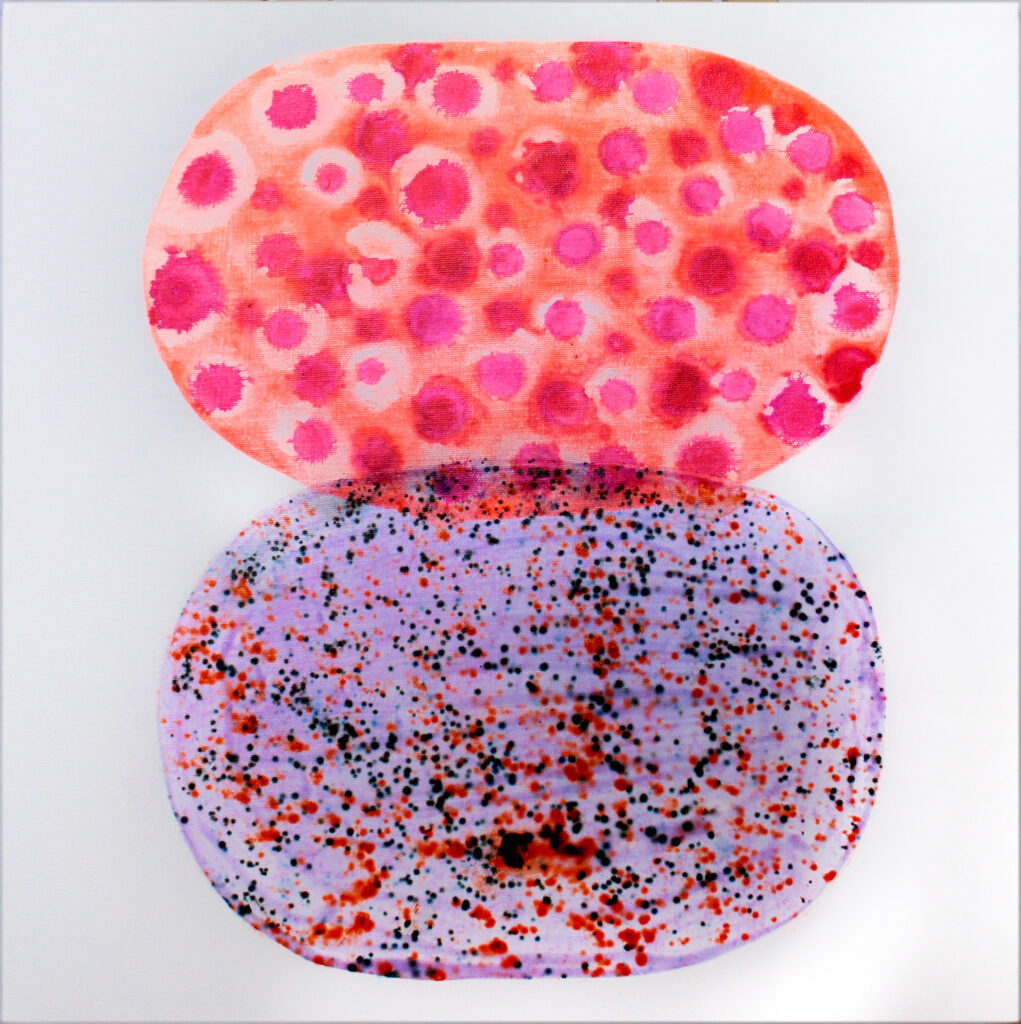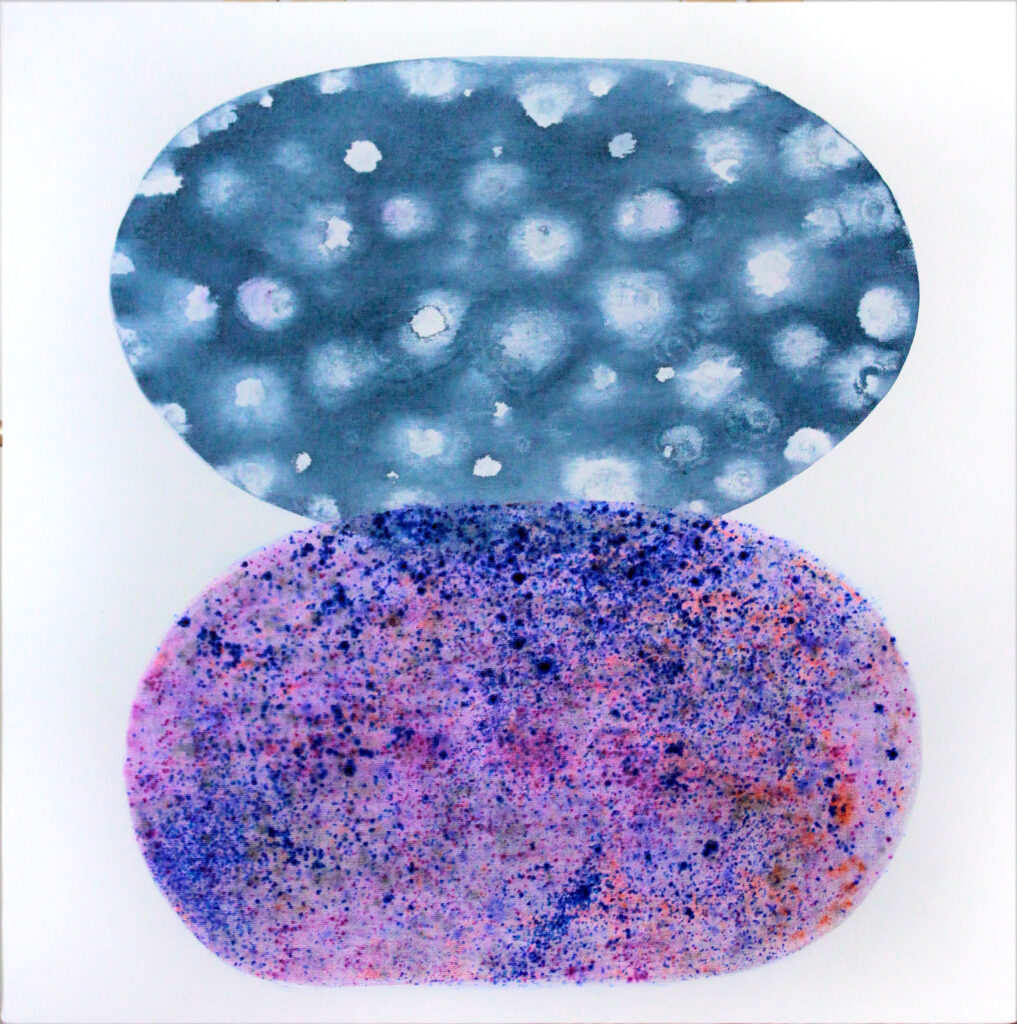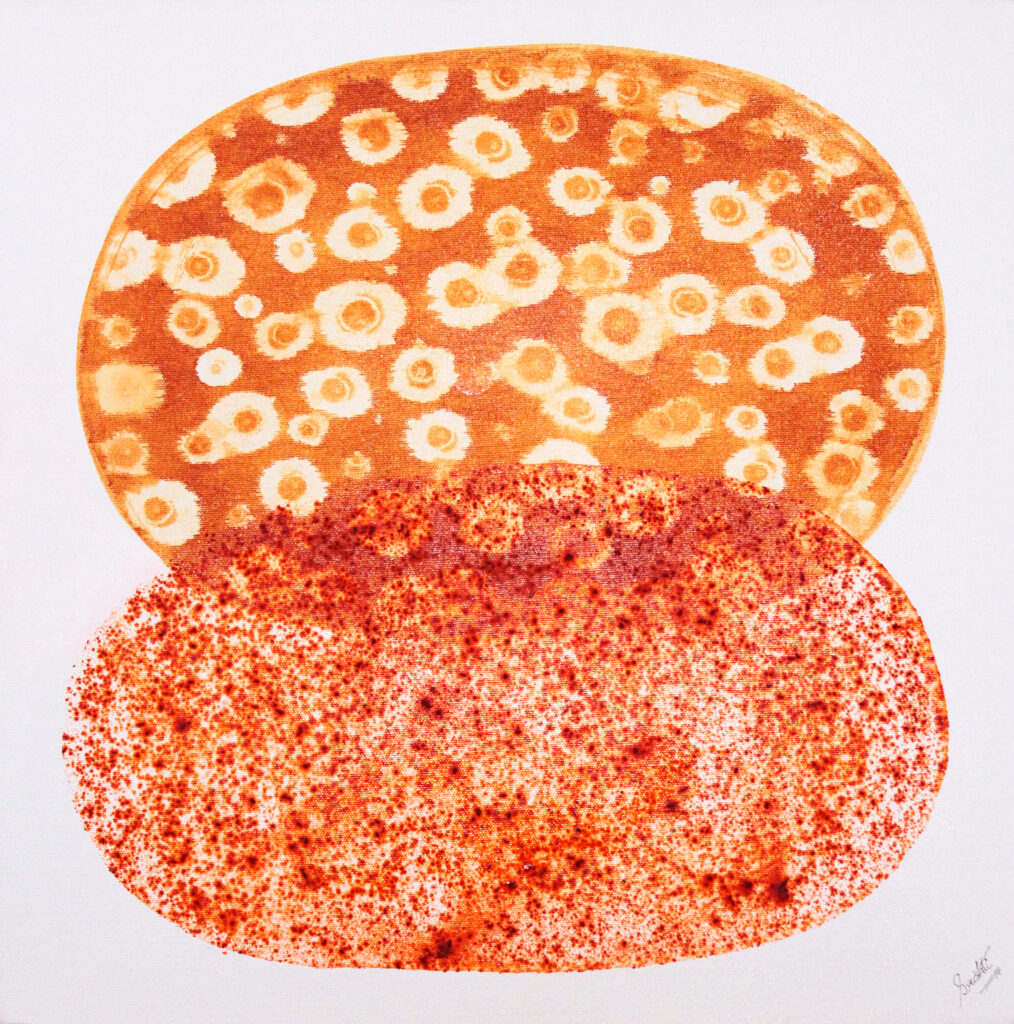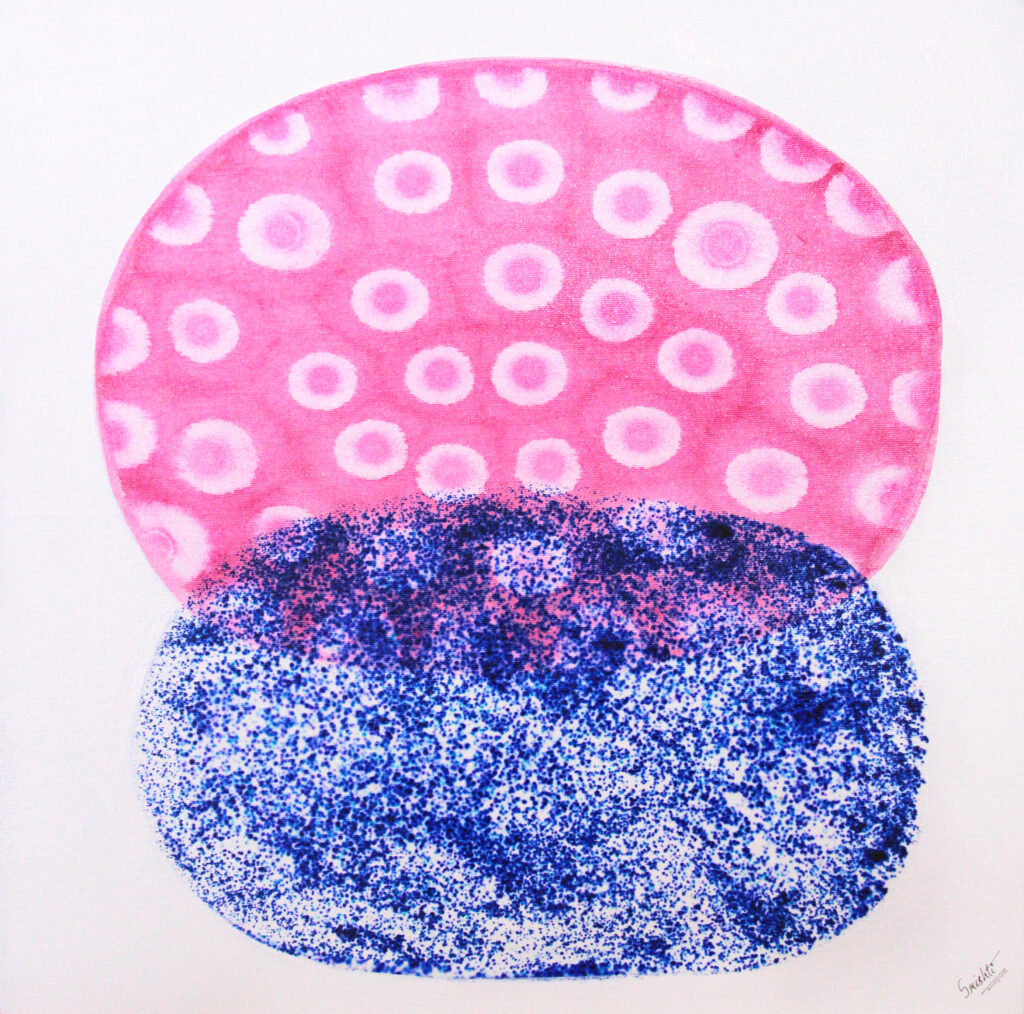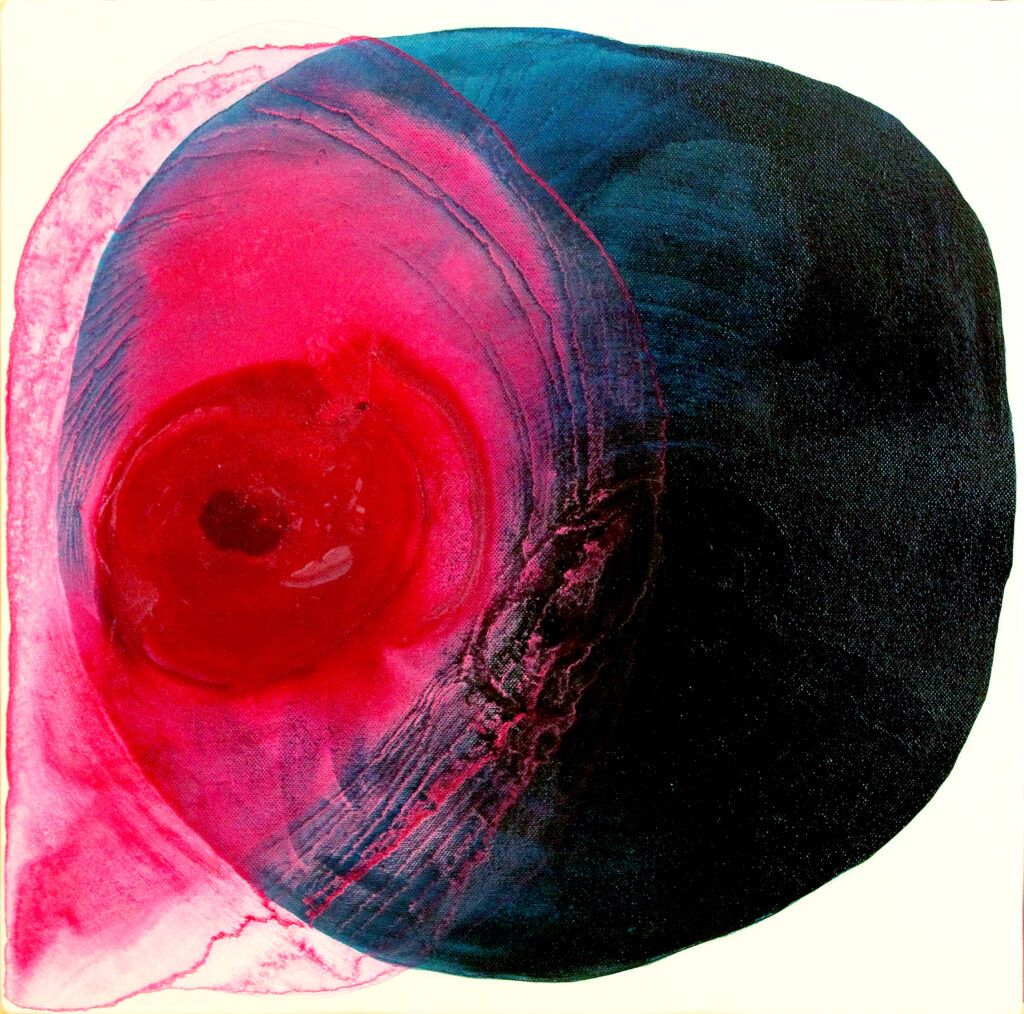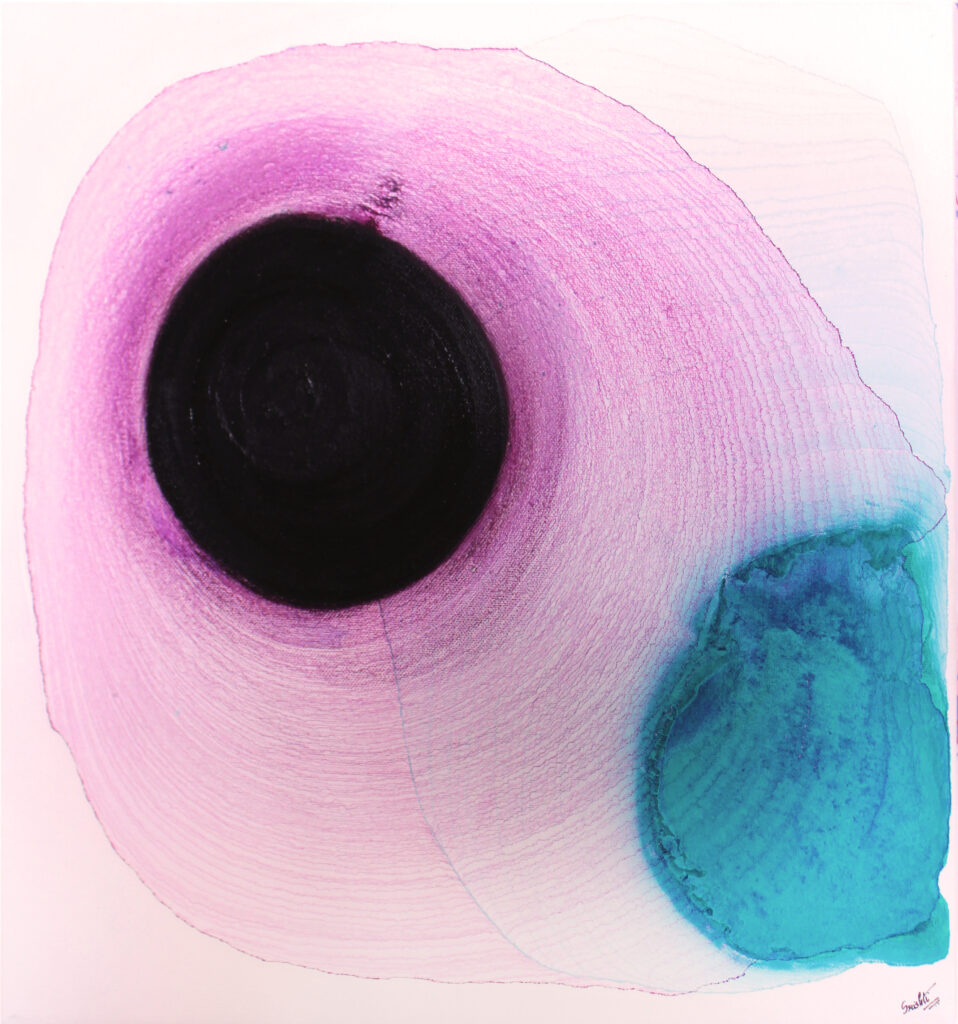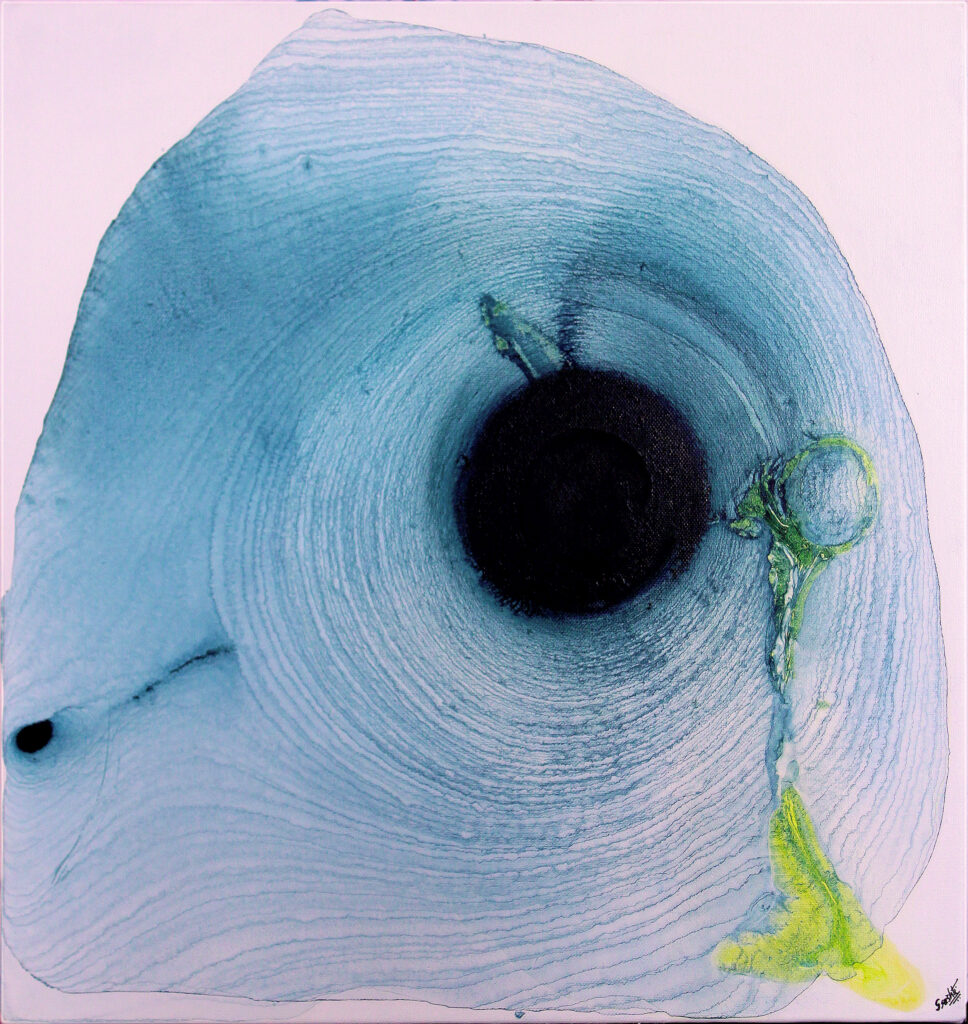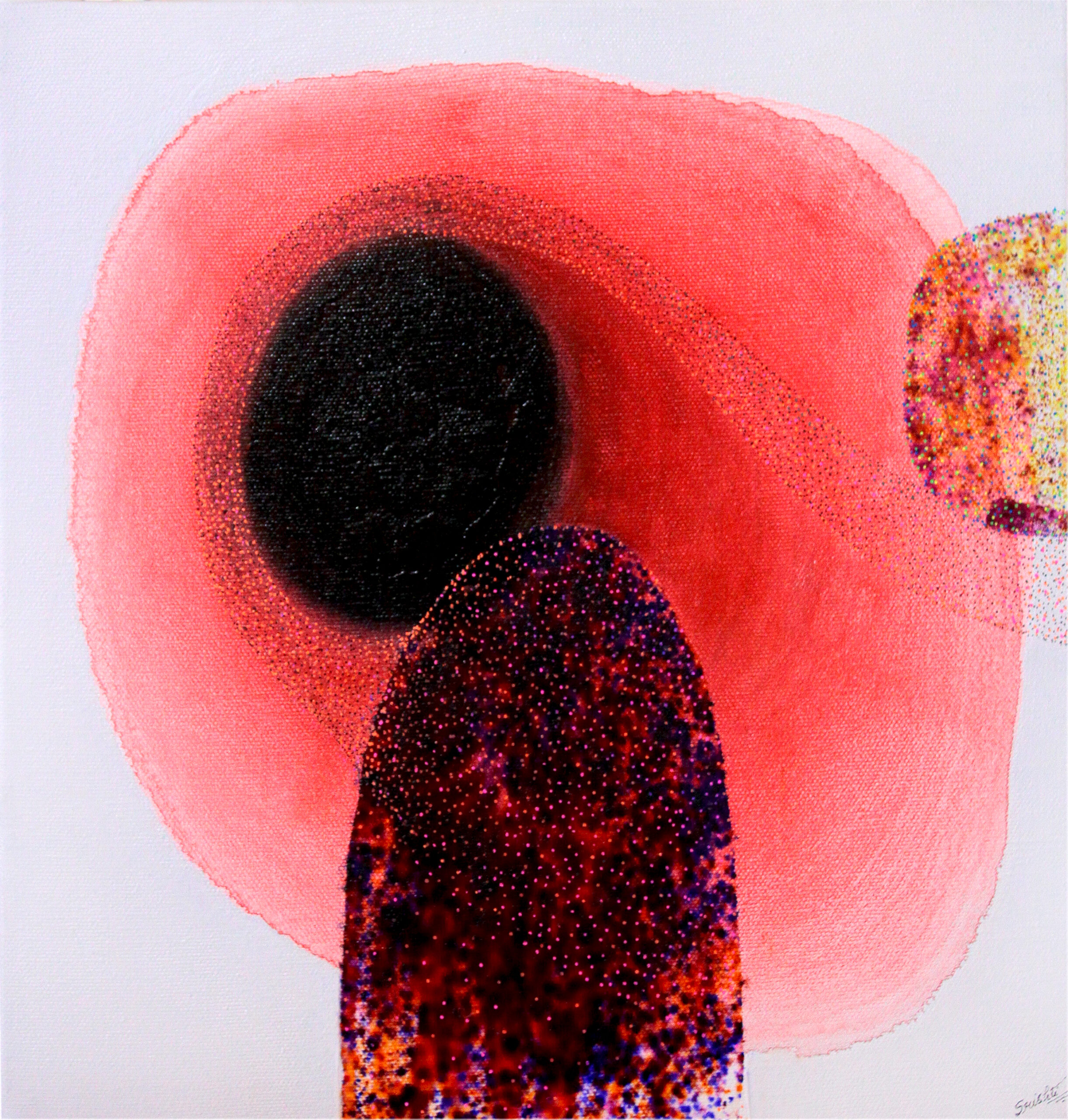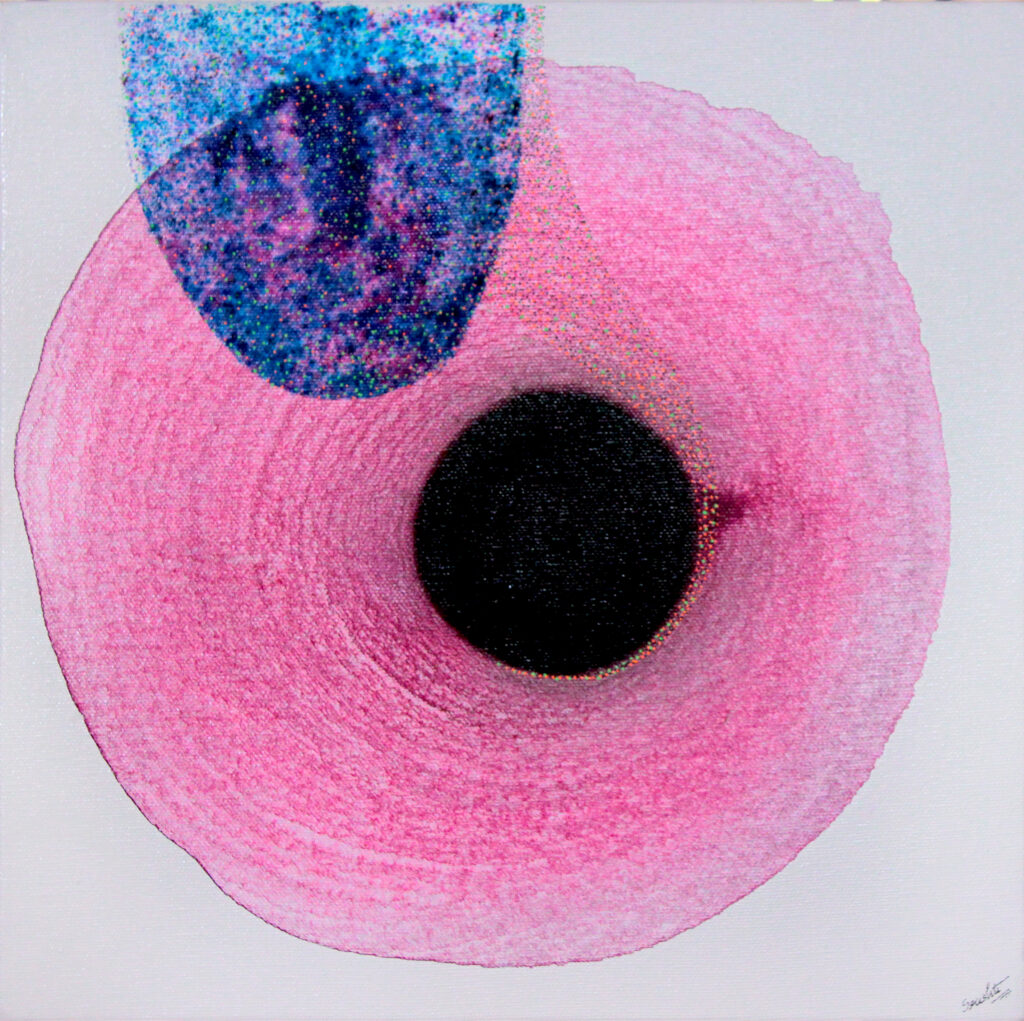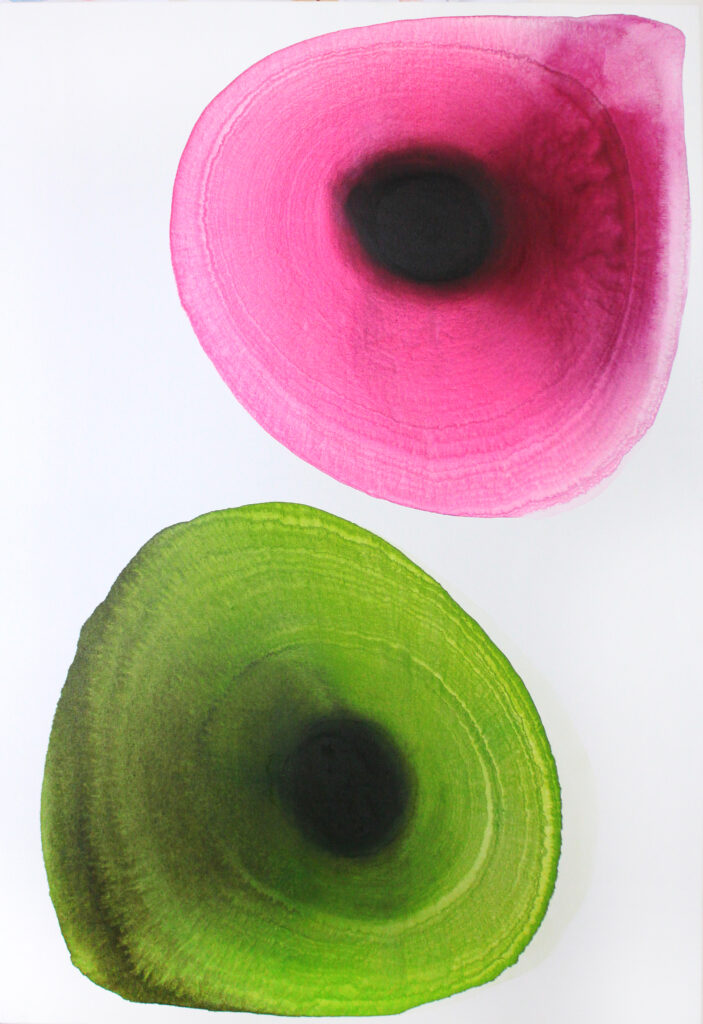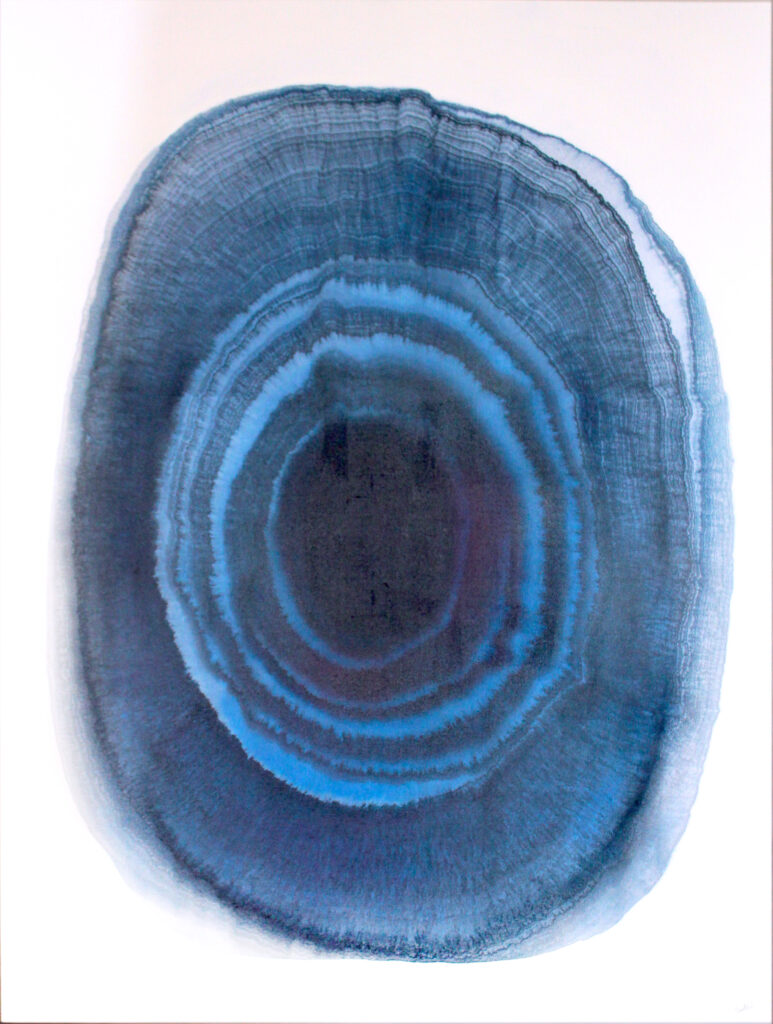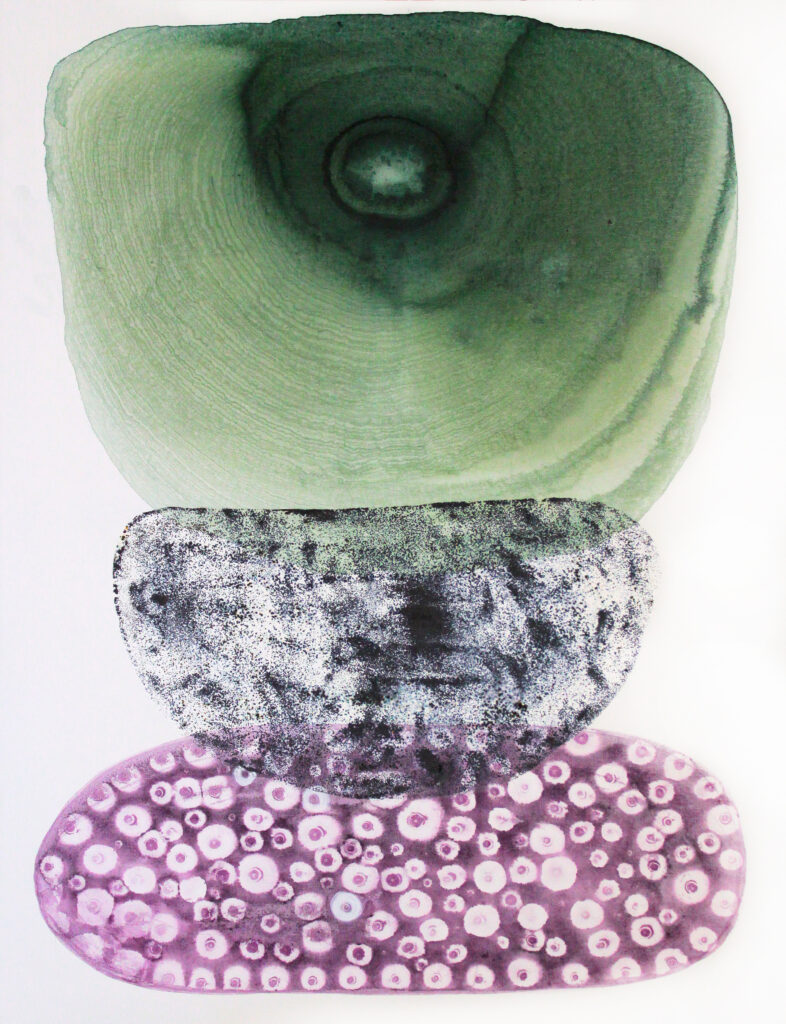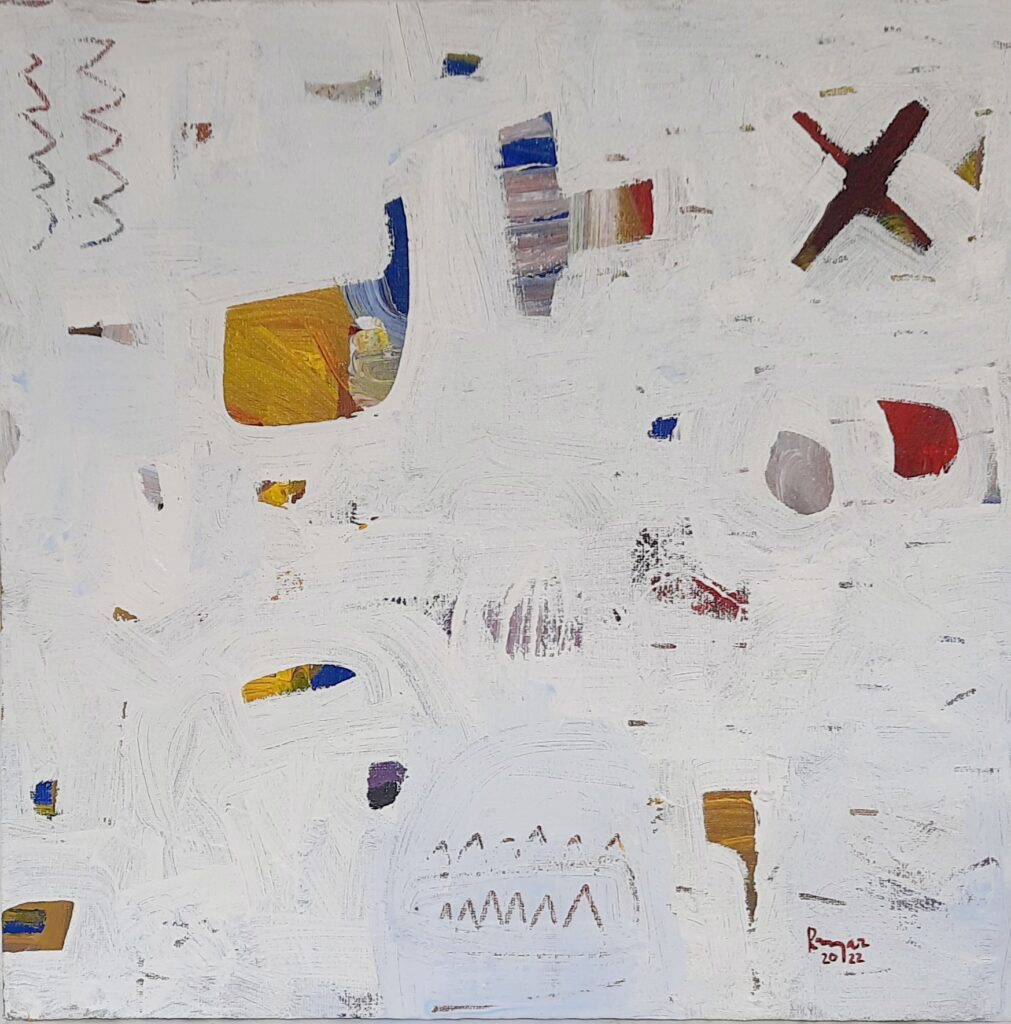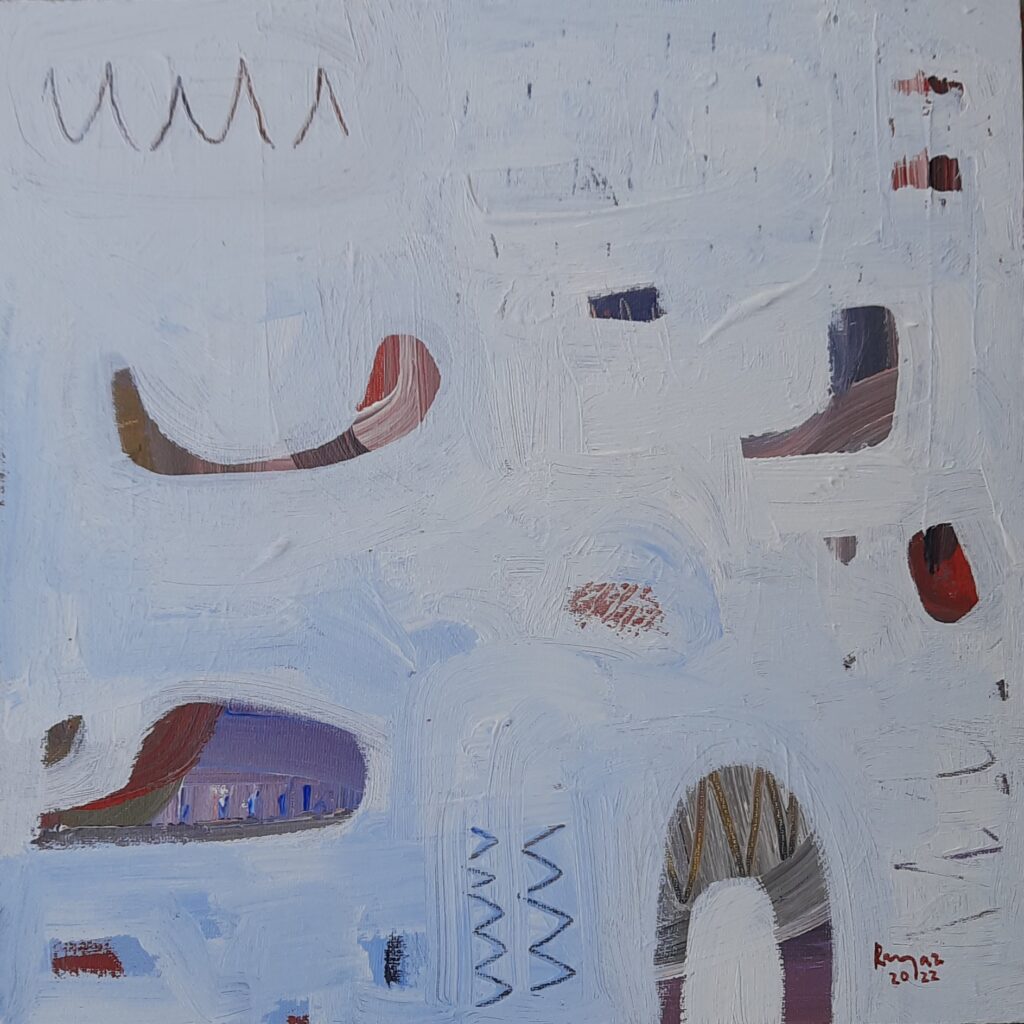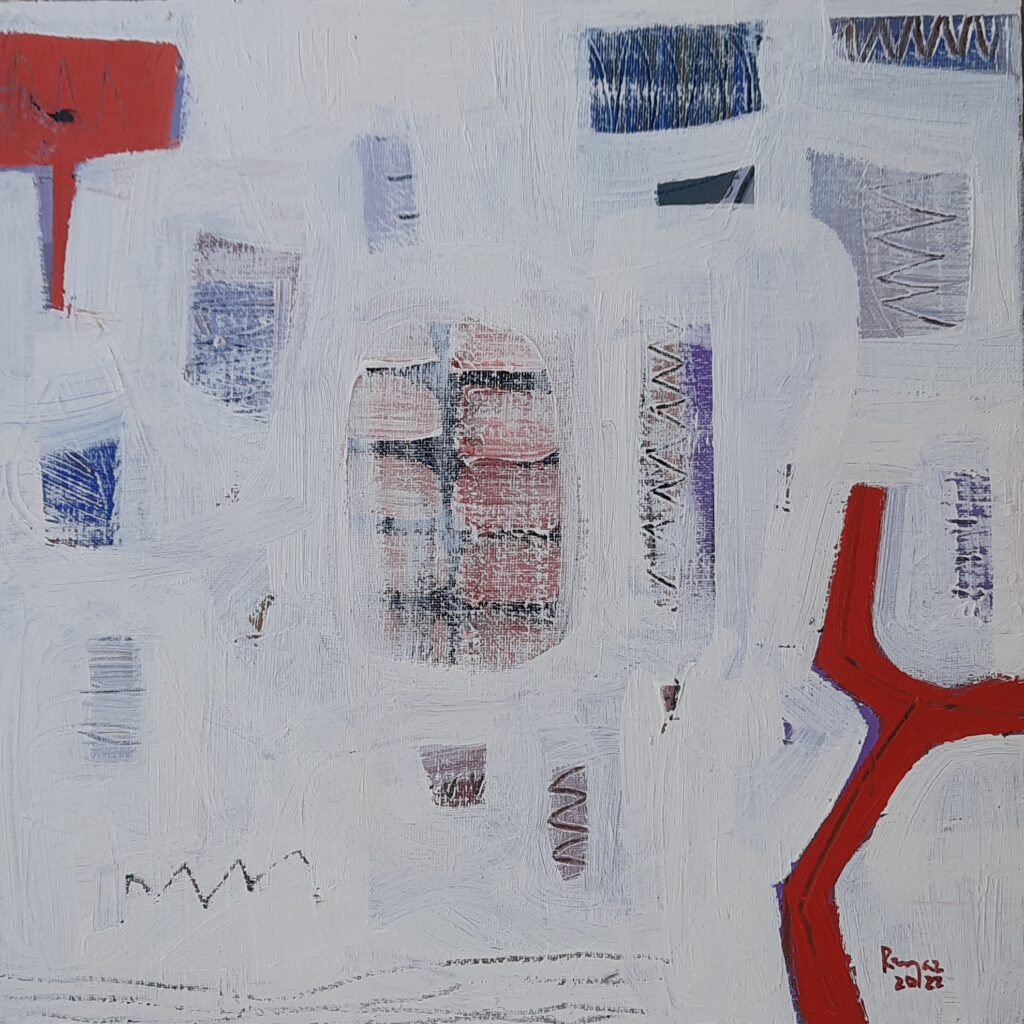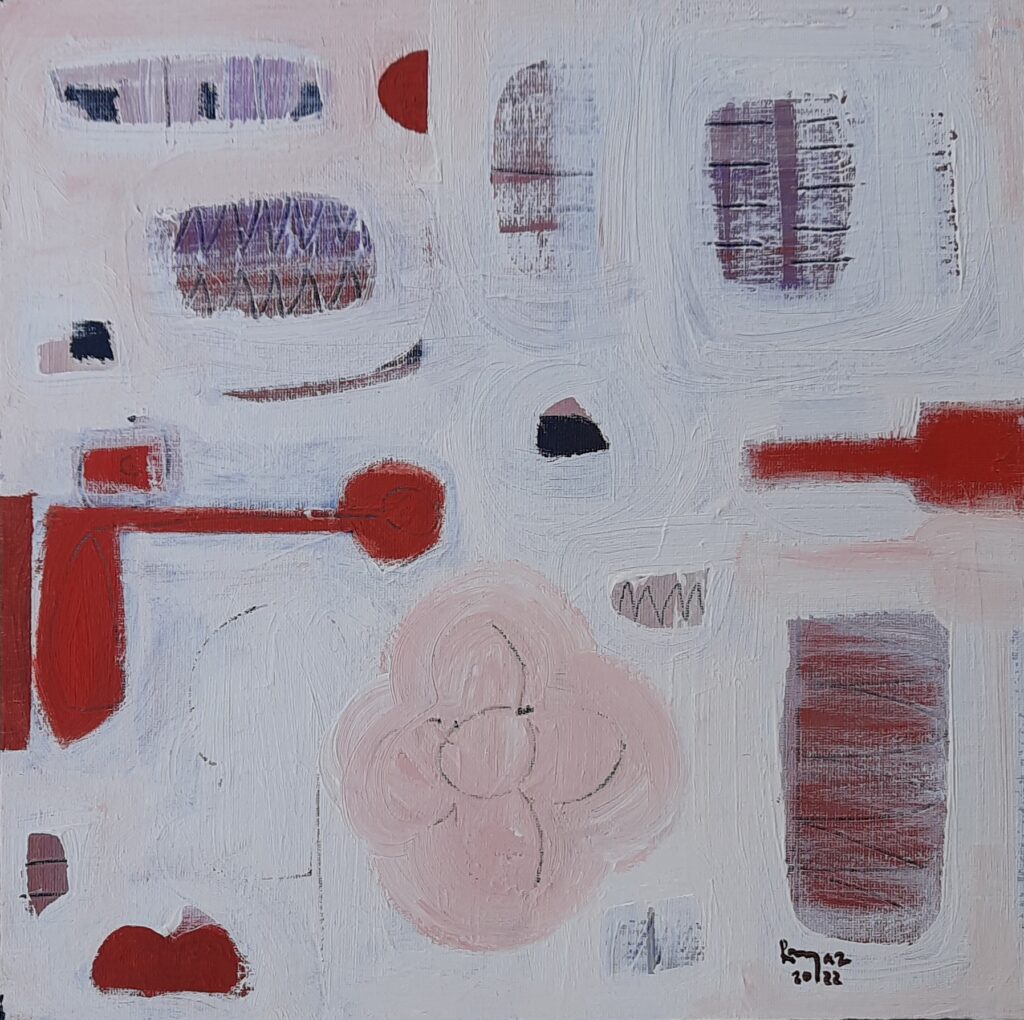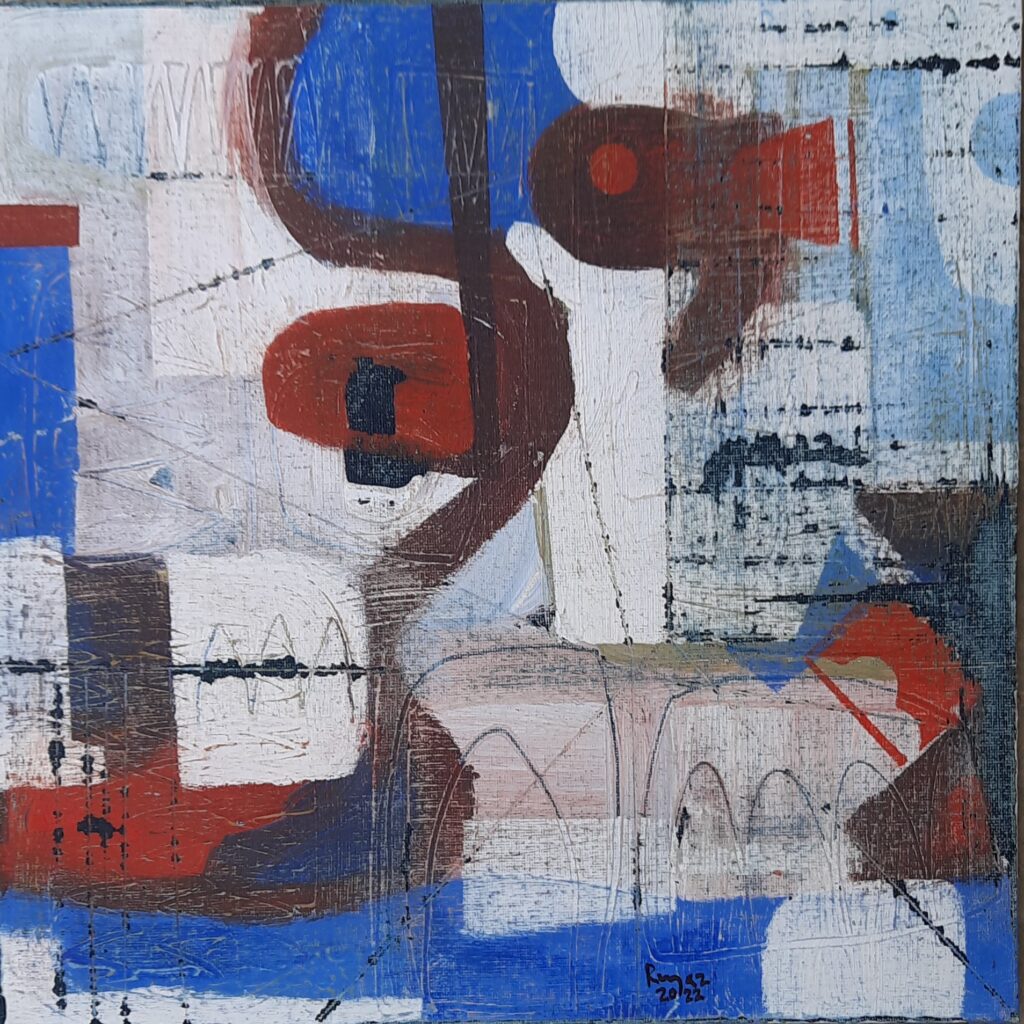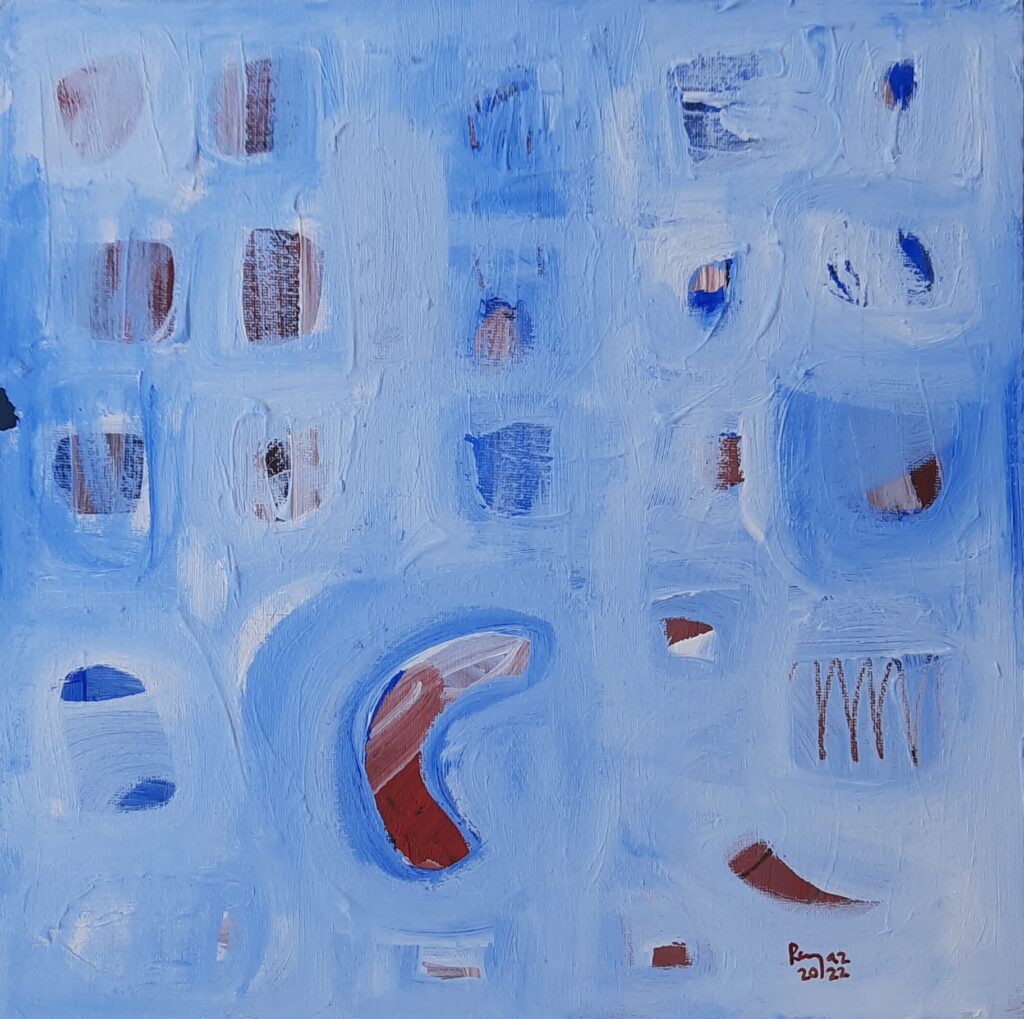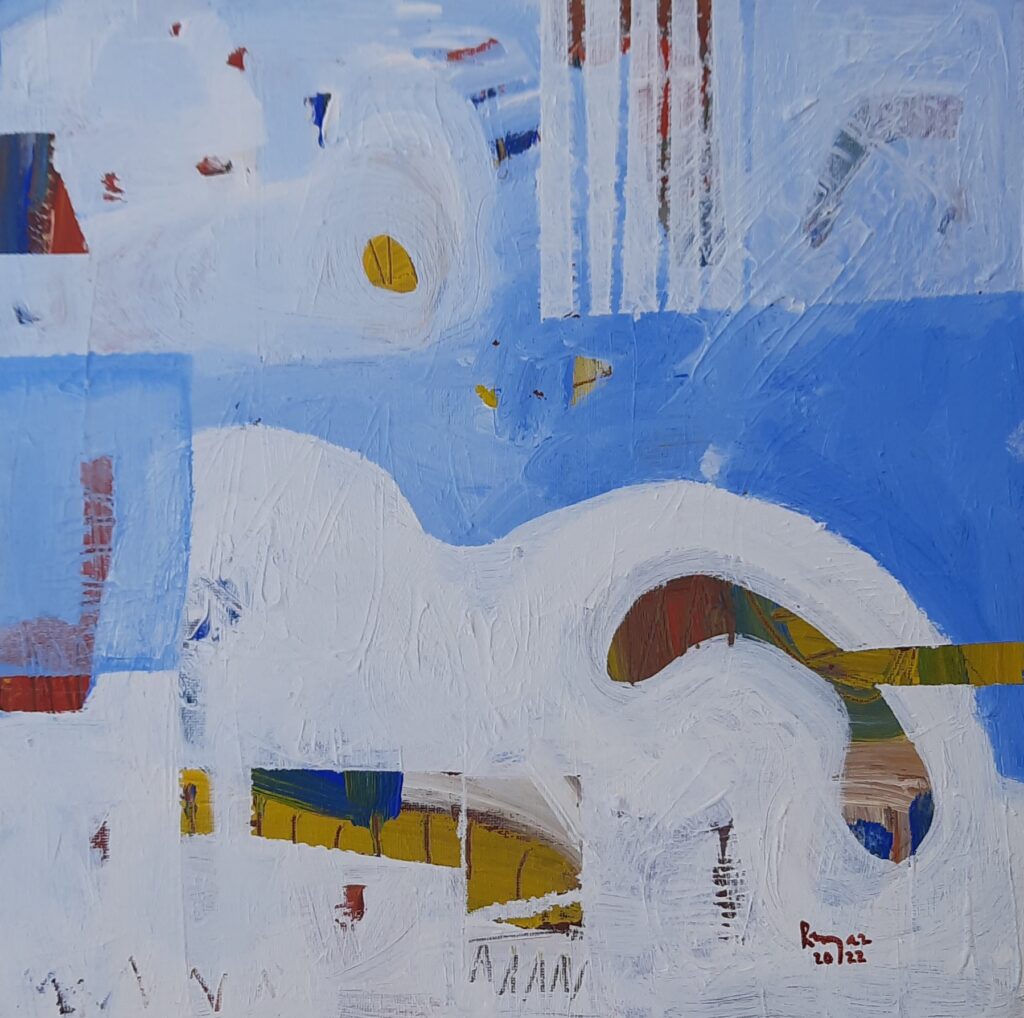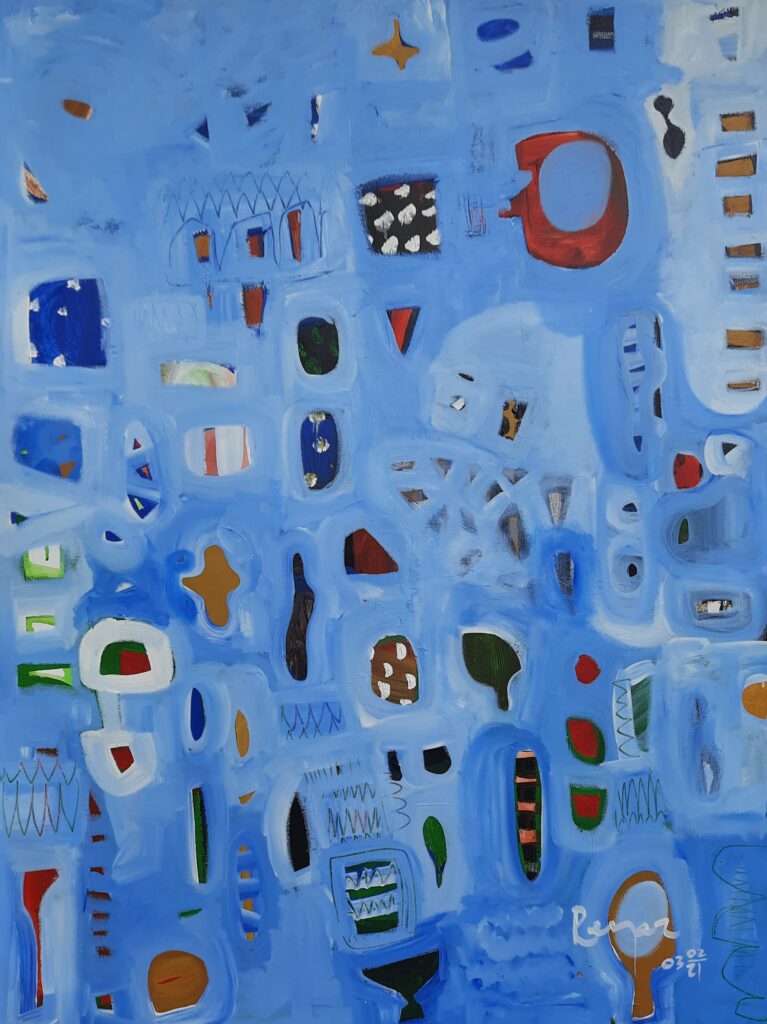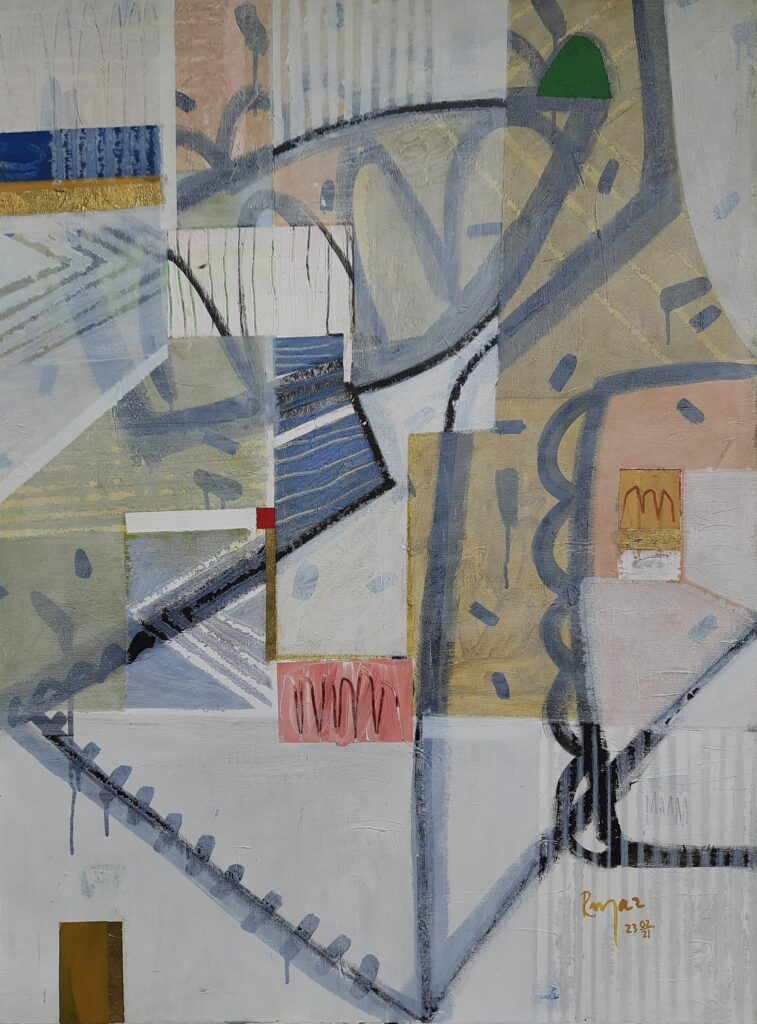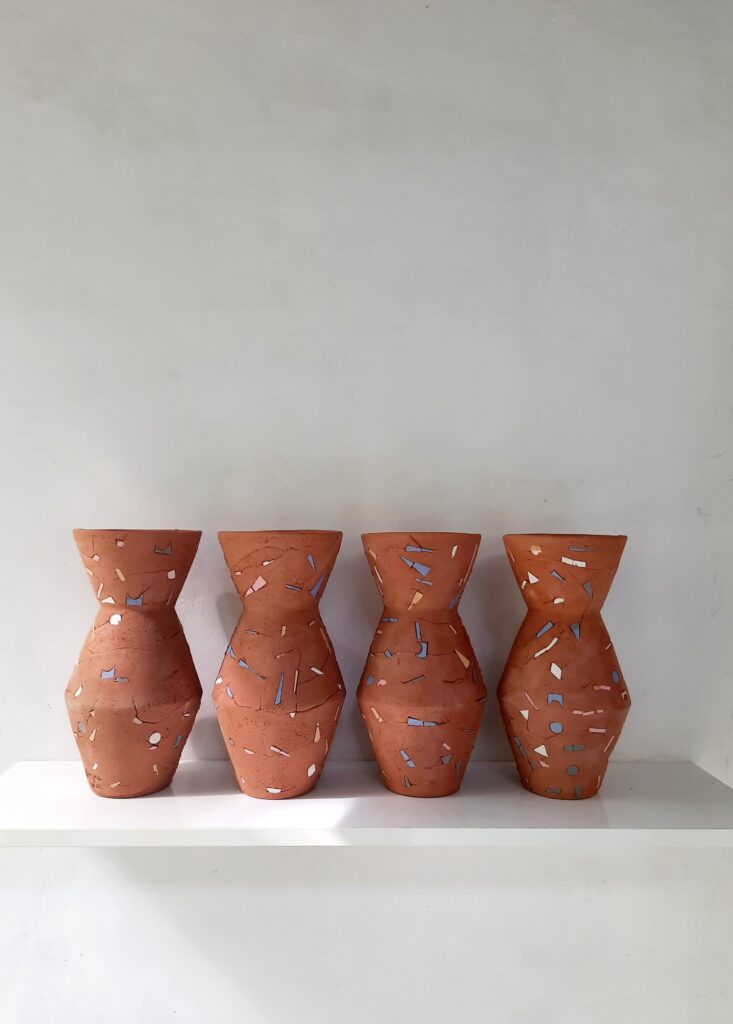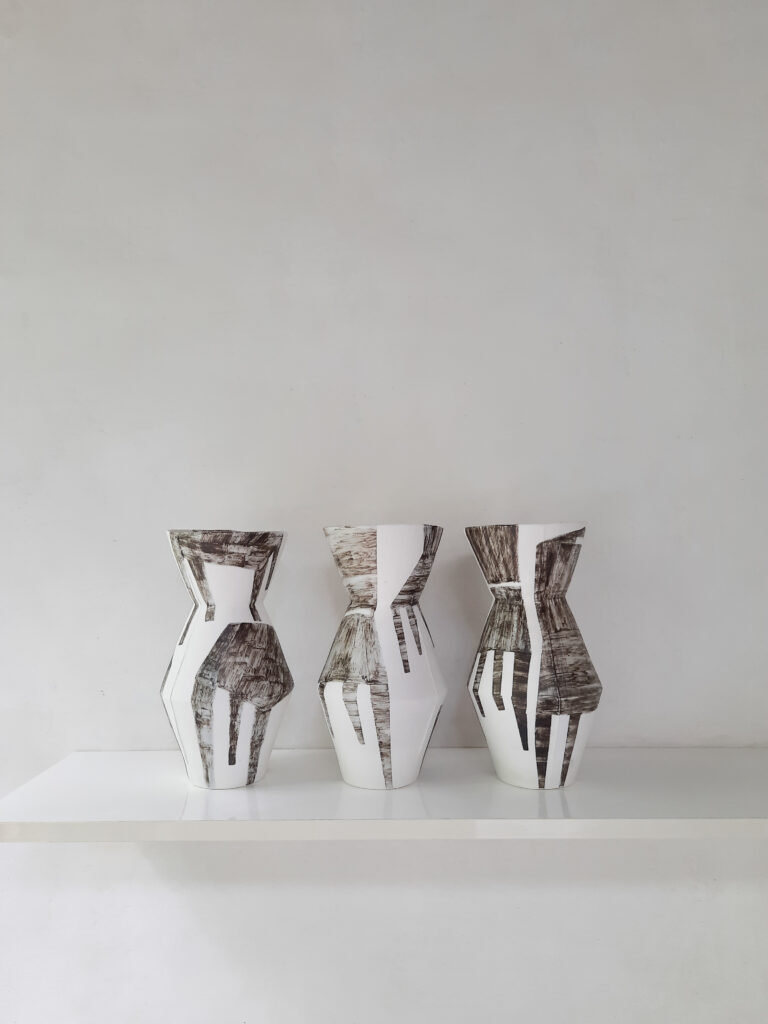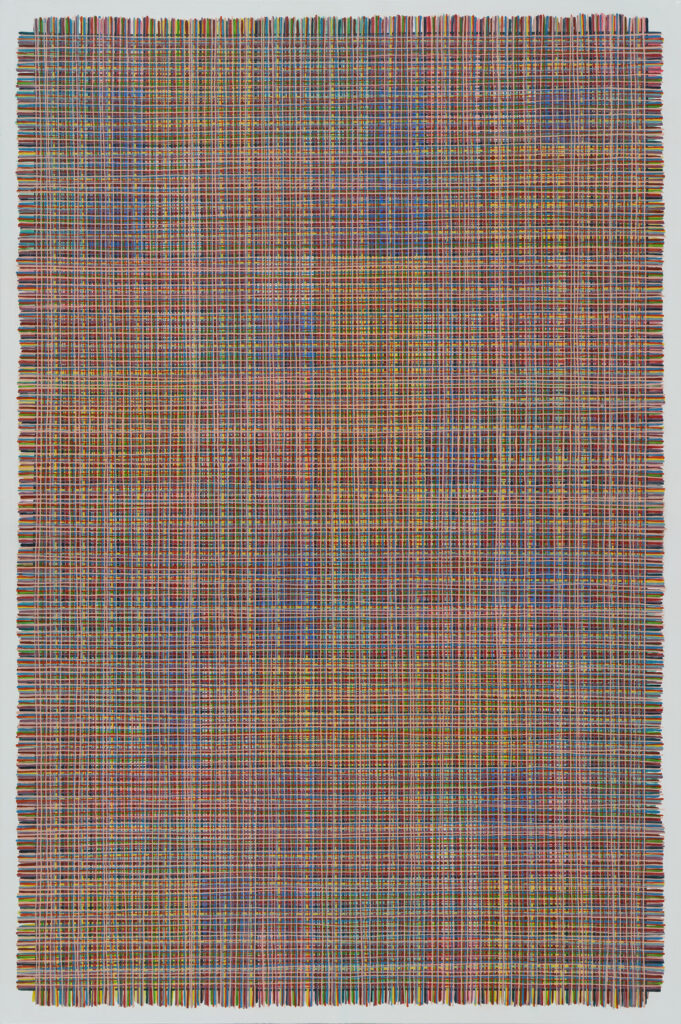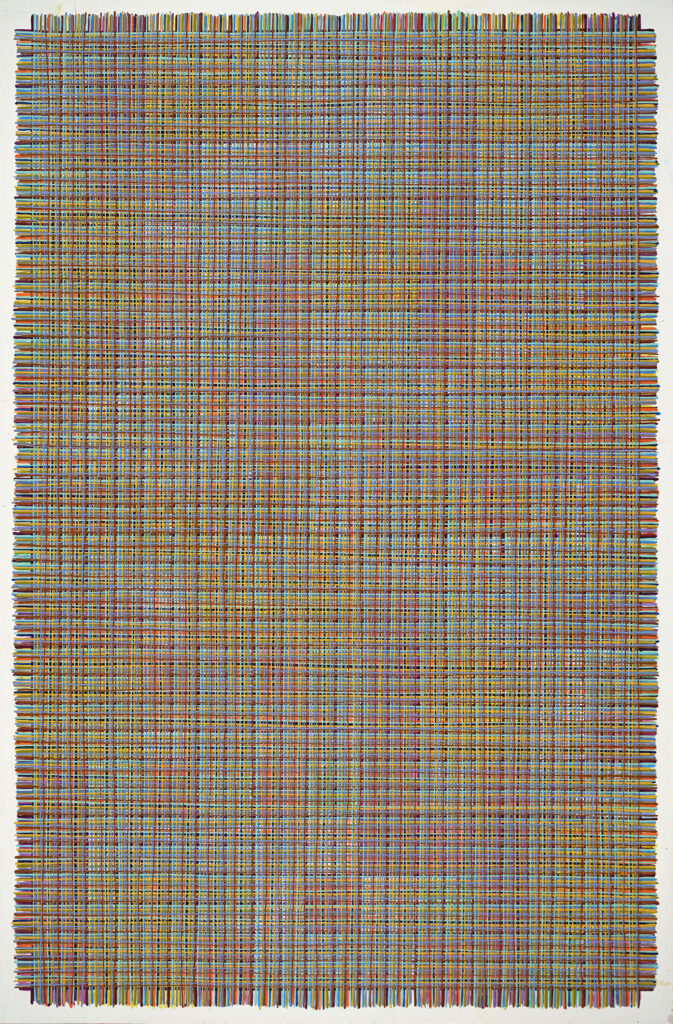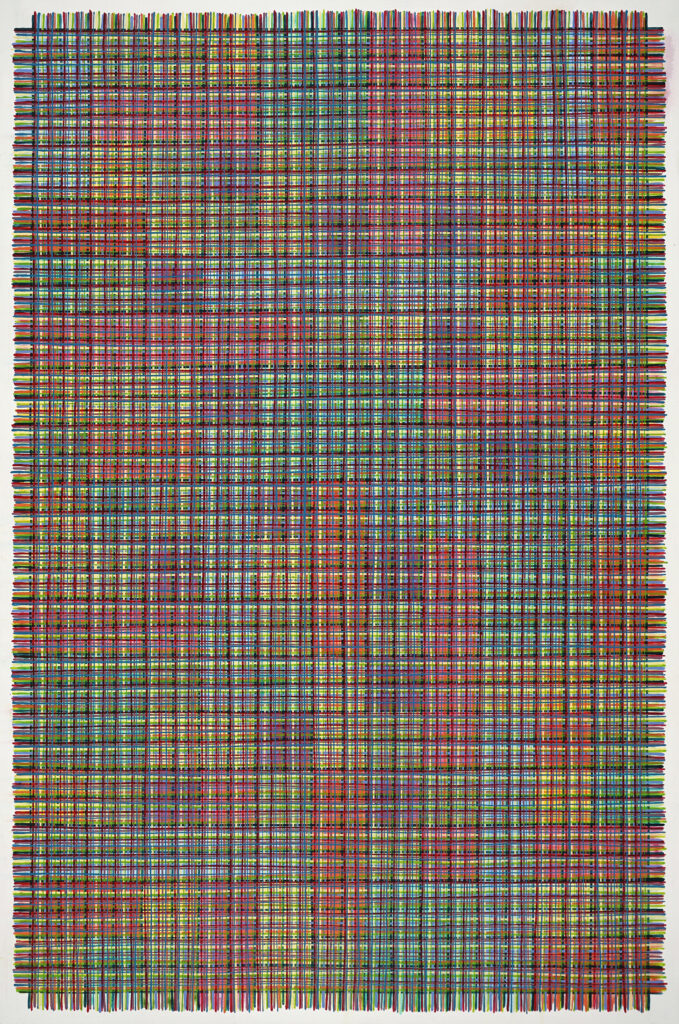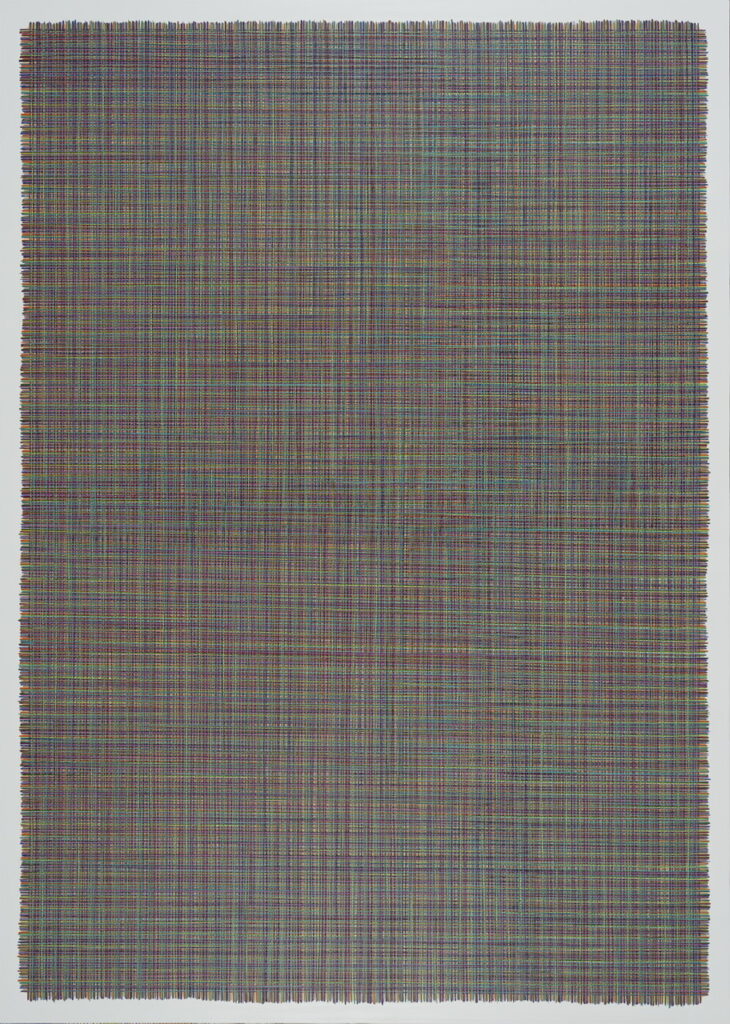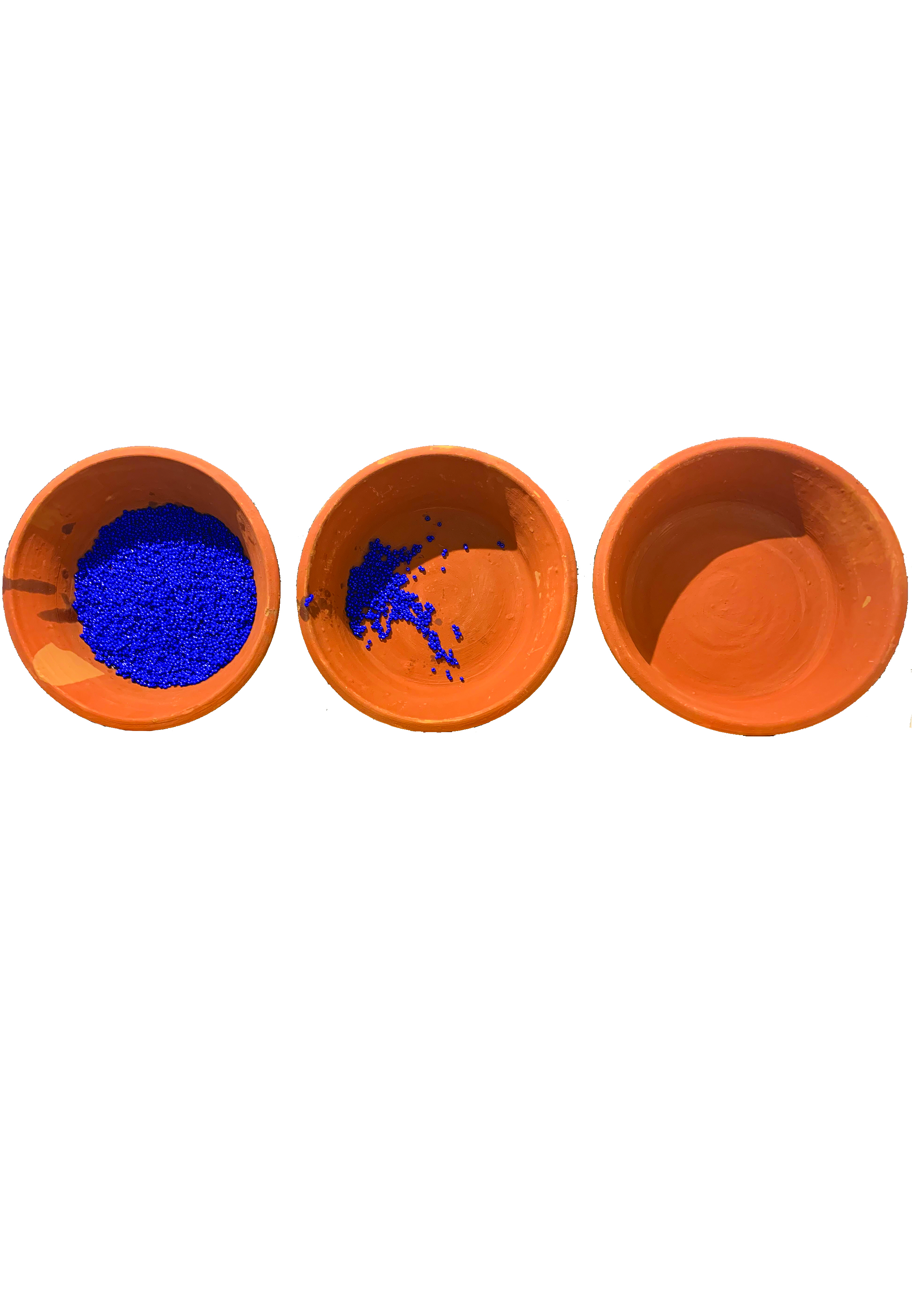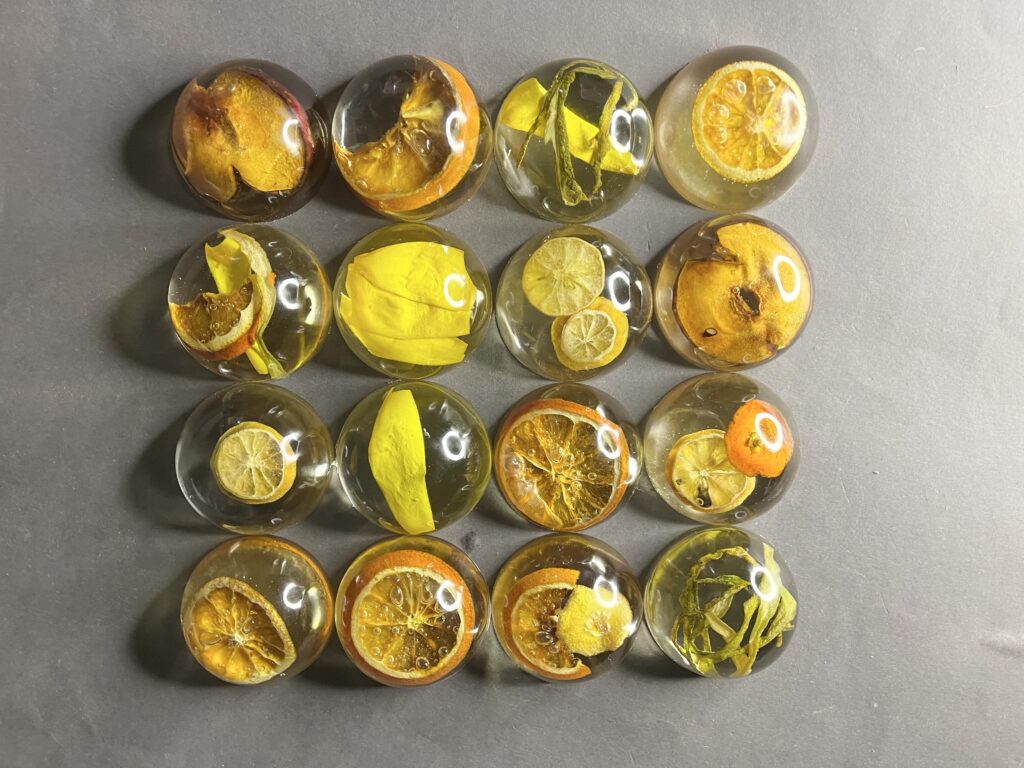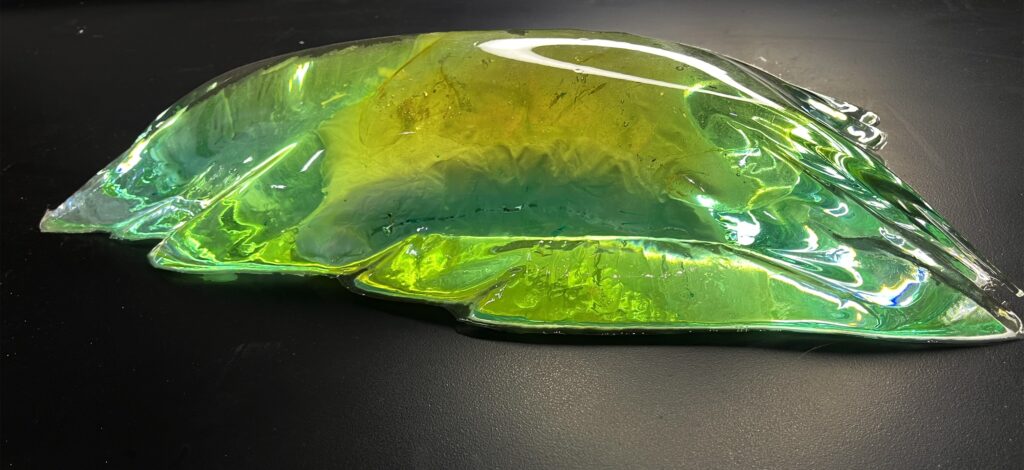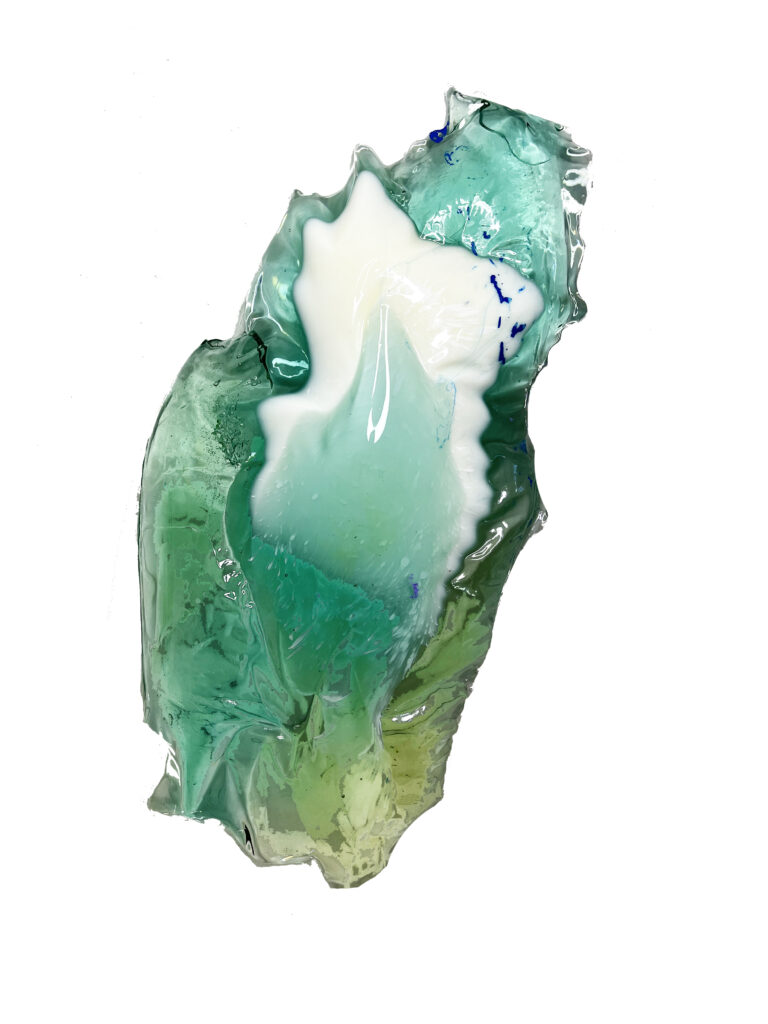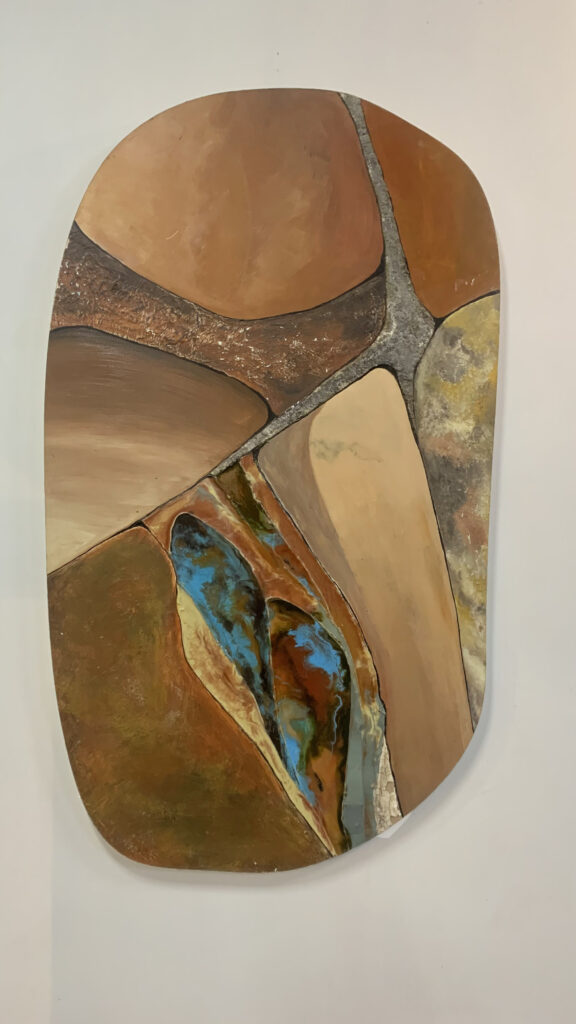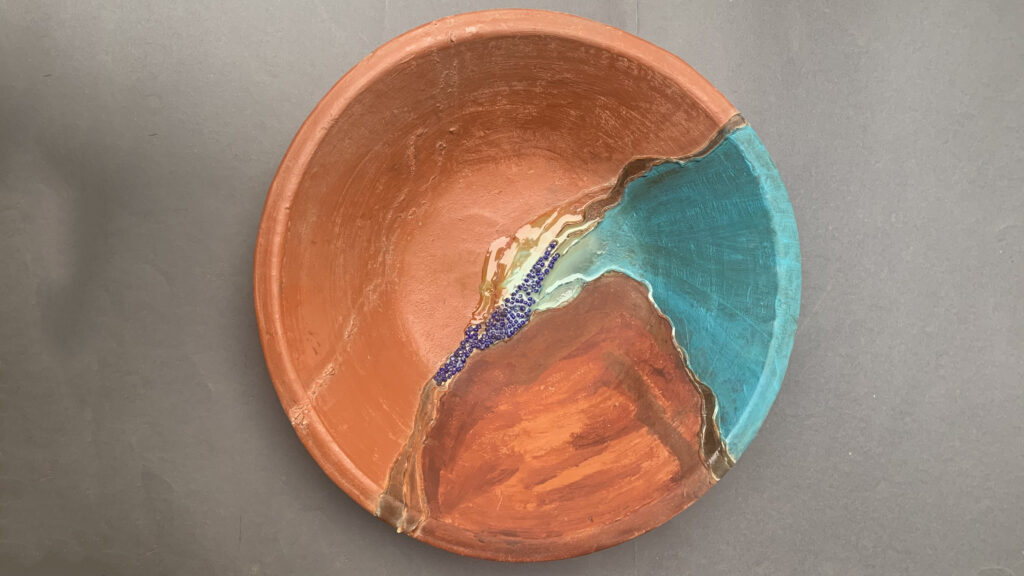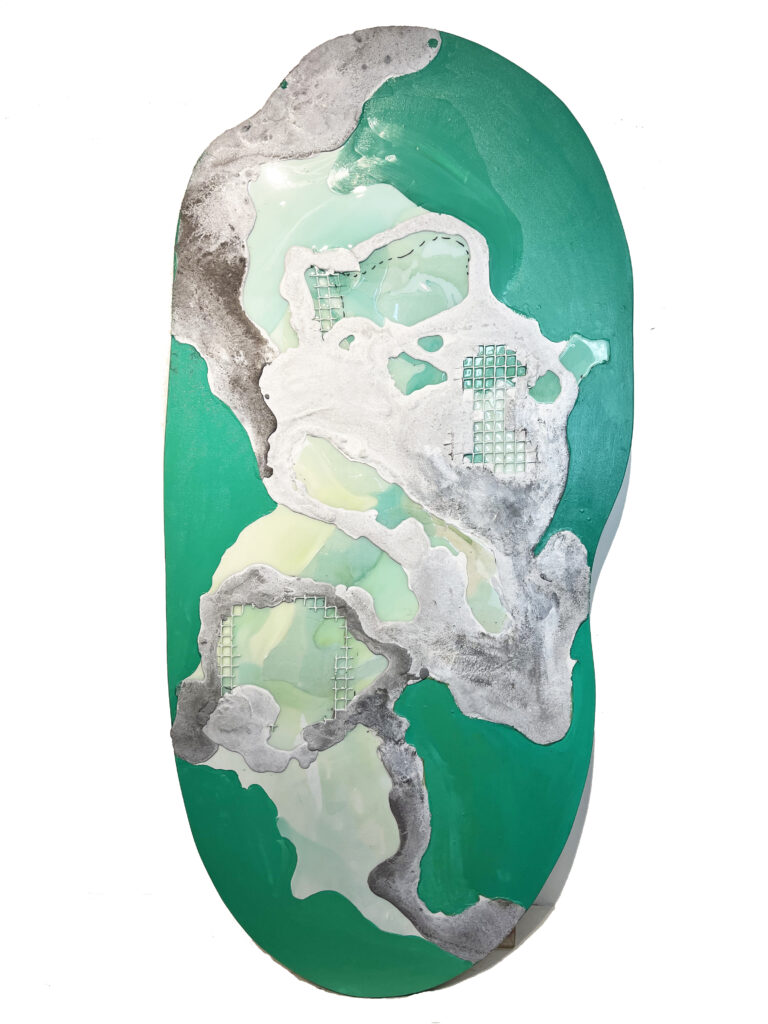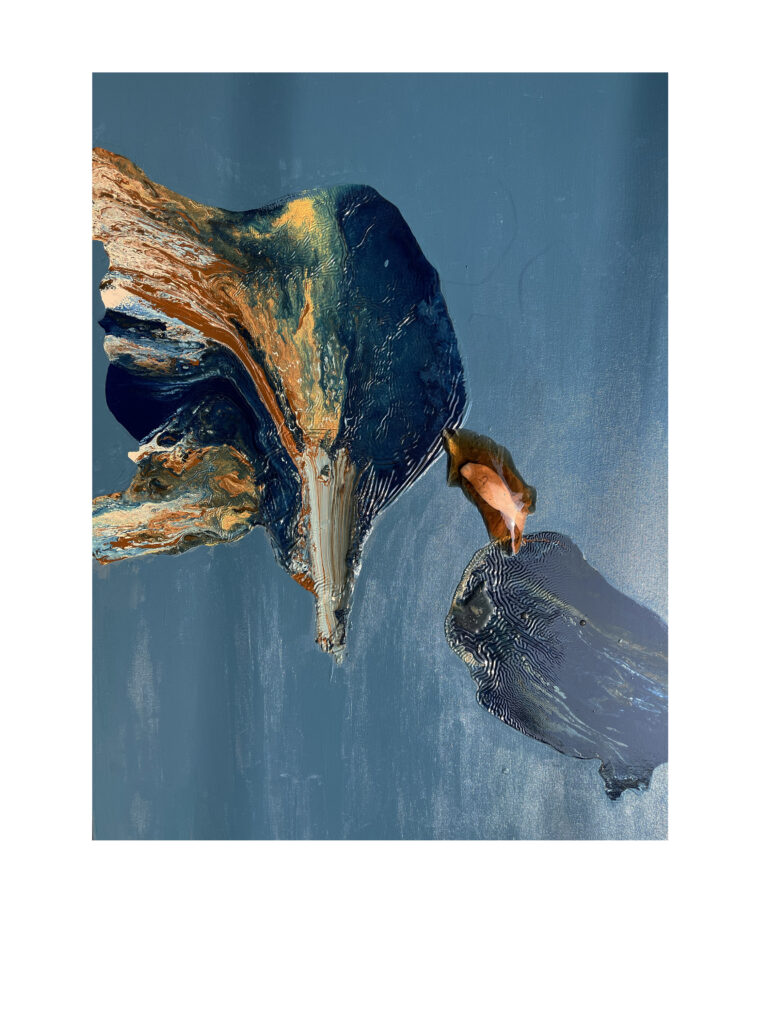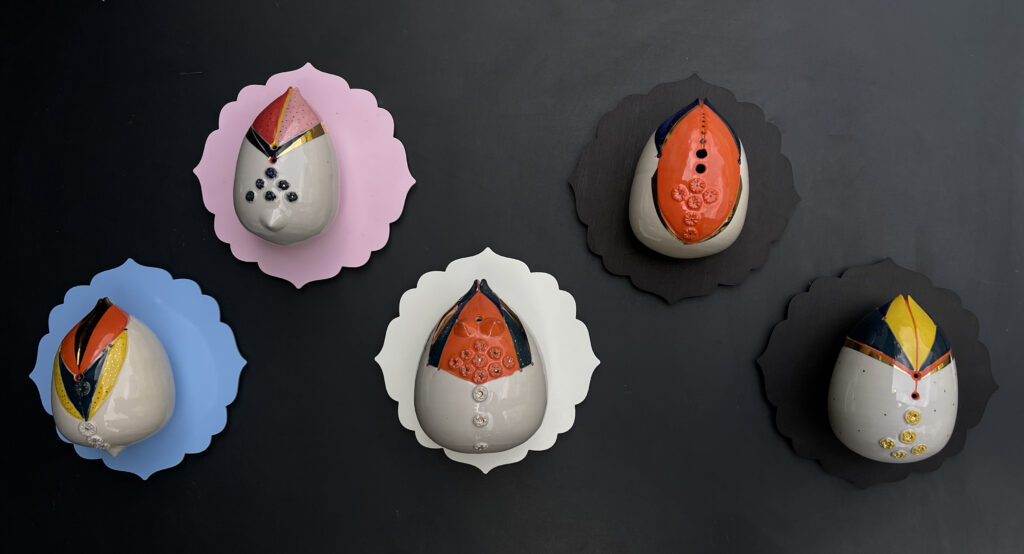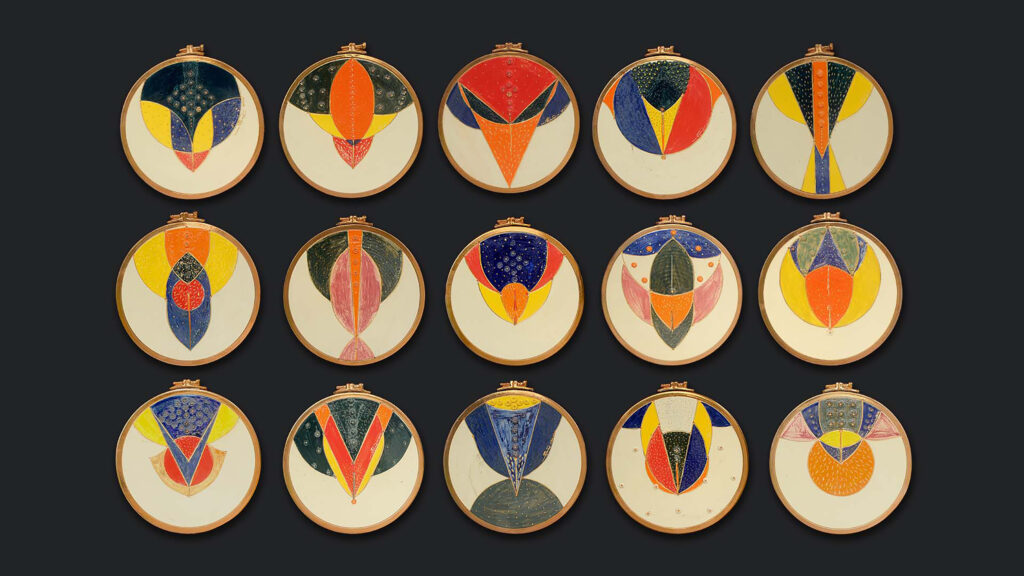Per Materiam
GROUP SHOW
Oct 15, 2022 - Oct 31, 2022
- SELECTED WORKS
- CURATORIAL NOTE
- INVITE
- PRESS RELEASE
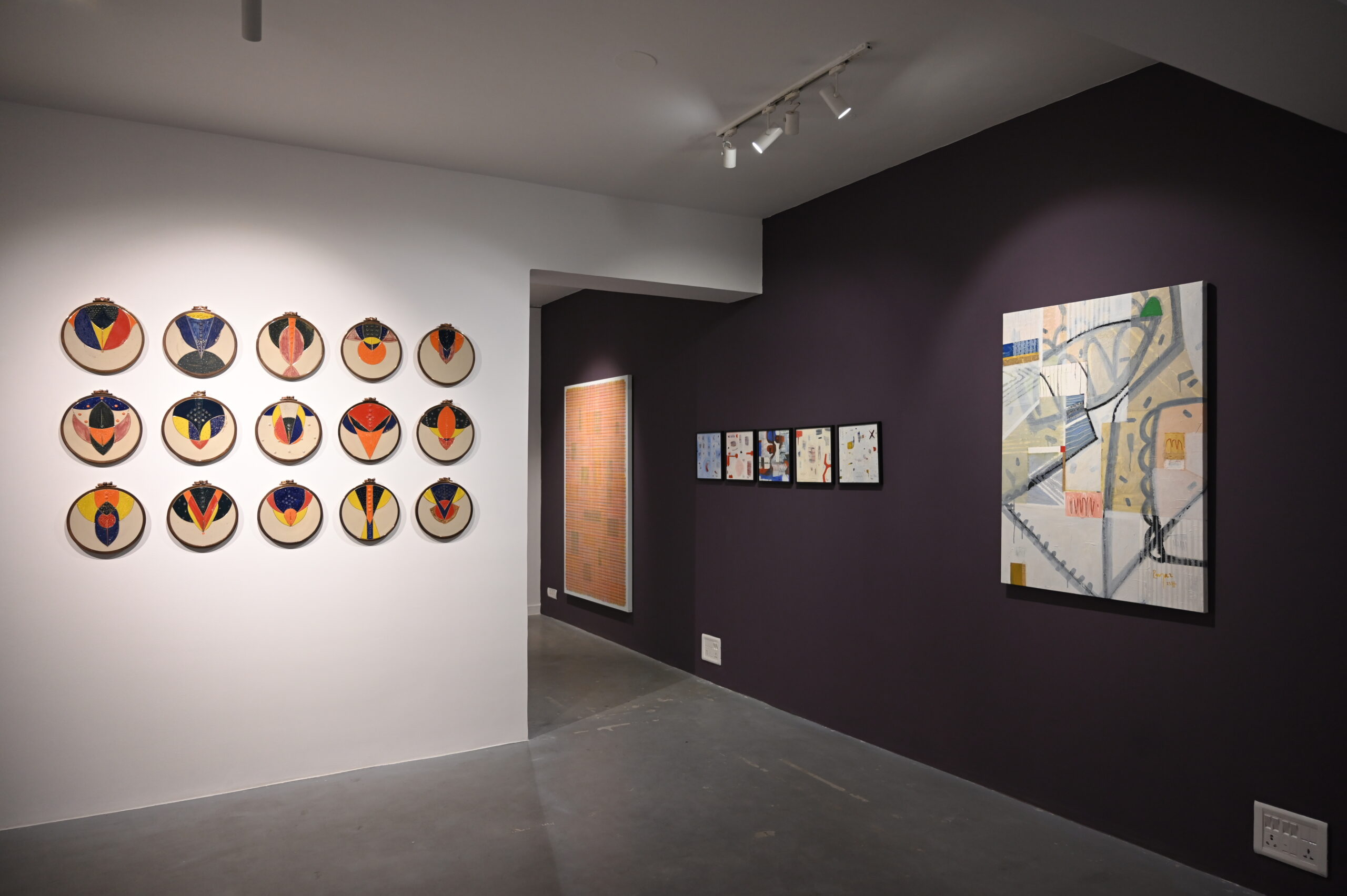
Meticulously curated, Per Materiam brings together the work of five artists—Harman Taneja, Vinod Daroz, Harisha Chennangod, Srishti Menon and Reyaz Badaruddin—that border the realm of abstraction.
Using versatile materials like resin and terracotta, colourful pigments and glazes, textures and moulds—these diverse art practitioners play with the idea of recurring motifs and bring out the erratic individuality of the base Materials at hand. The outcome of their imaginative explorations is one that is filled with ingenuity and visionary aesthetic.
CURATORIAL NOTE
Per Materiam: Motif and Materiality
Physical materials that are often secondary to the subject in the discussion of a work of art, are replete with expressive qualities. The variegated grain on the stretched canvas, the softness of clay that buries fingerprints, the shapeless liquidity of resin—this tactility demands a visceral and emotional response from the viewer. The self-referential quality of modern abstraction and near-abstraction requires the art practitioner to submit to the erratic individuality of the material. Instead of looking outward to textual/subtextual politics and literature, the sheer physicality of the material gives form to artistic subjectivities that emerge from within the artwork itself. Per materiam, the painted canvas becomes a sculpture; per materiam, the ceramics that have long been associated with ‘craft’, shed their Kantian utilitarian quality and acquire the traditional aesthetic associations of ‘art’.
In the works of the five artists—Harman Taneja, Vinod Daroz, Harisha Chennangod, Srishti Menon and Reyaz Badaruddin—the artistic intent submits itself at the altar of the material. Almost immersed in meditation, each of their works falls back on recurring motifs and themes as the artists explore the development of their distinctive mark. As if counting beads on a rosary, a multiplicity emerges through the practice of repeated creation using these versatile materials. These diverse practitioners play with the idea of the material and the recurring motif that threads their oeuvres together.
In Srishti Menon’s colourful striations and Harisha’s minimalist ‘threads’, the motif or the ‘motive’, as Richard Schiff puts it, moves—rhythmically on the surface of the material, and emotively in the consciousness of both the artist and the viewer. (1984) The mark or the brushstroke which is loose and gestural in Menon’s canvas, and controlled and neat in Harisha’s, reveal a motif that is self-motivating—it perpetuates itself, and as it interlocks and spreads, it induces its own continuation. In Harman Taneja’s 120 Days, pigments swirl on paper and reveal what was previously unseen on the stark surface, day after day like an expressive chant, uttered repeatedly until it cracks open and reveals the personal.
There is a cyclicality inherent in repetition; a certain distaste for teleological time that ruthlessly moves forward. But traversing the circular path does not connote the ‘eternal return’ of the similar, but in fact, the dissimilar. When Nietzsche and Hegel talked of a being becoming or coming into its own, they theorised that it was through negation that the being’s identity formation happens. We are who we are because we are not someone else. And so repetition is both the affirmation of difference, as well as representation of a unity based on the fact that each is different. In Vinod Daroz’s ceramic series or even Reyaz Badaruddin’s myriad object explorations, there is an essential oneness that holds the multiplicity in their pieces together.
“A single voice raises the clamour of being.” as Deleuze famously puts in his book Difference and Repetition (1968). Somewhere between the idea, the reiteration and the simulacrum, the physicality of the medium speaks—it tells you to wish for more than to just know, to do more than just see.
By Apoorva Kapur
References
Deleuze Gilles and Paul Patton. Difference and Repetition. 1968.
Hegel, Georg Wilhelm Friedrich. “Hegel, the Essential Writings.” 1974.
Kant, Immanuel. Critique of Judgement. 1884.
Shiff, Richard. “13. Mark, Motif, Materiality: The Cézanne Effect in the Twentieth Century”. Critical Readings in Impressionism and Post-Impressionism: An Anthology, edited by Mary Tompkins Lewis, Berkeley: University of California Press. 2020. pp. 287-322.
